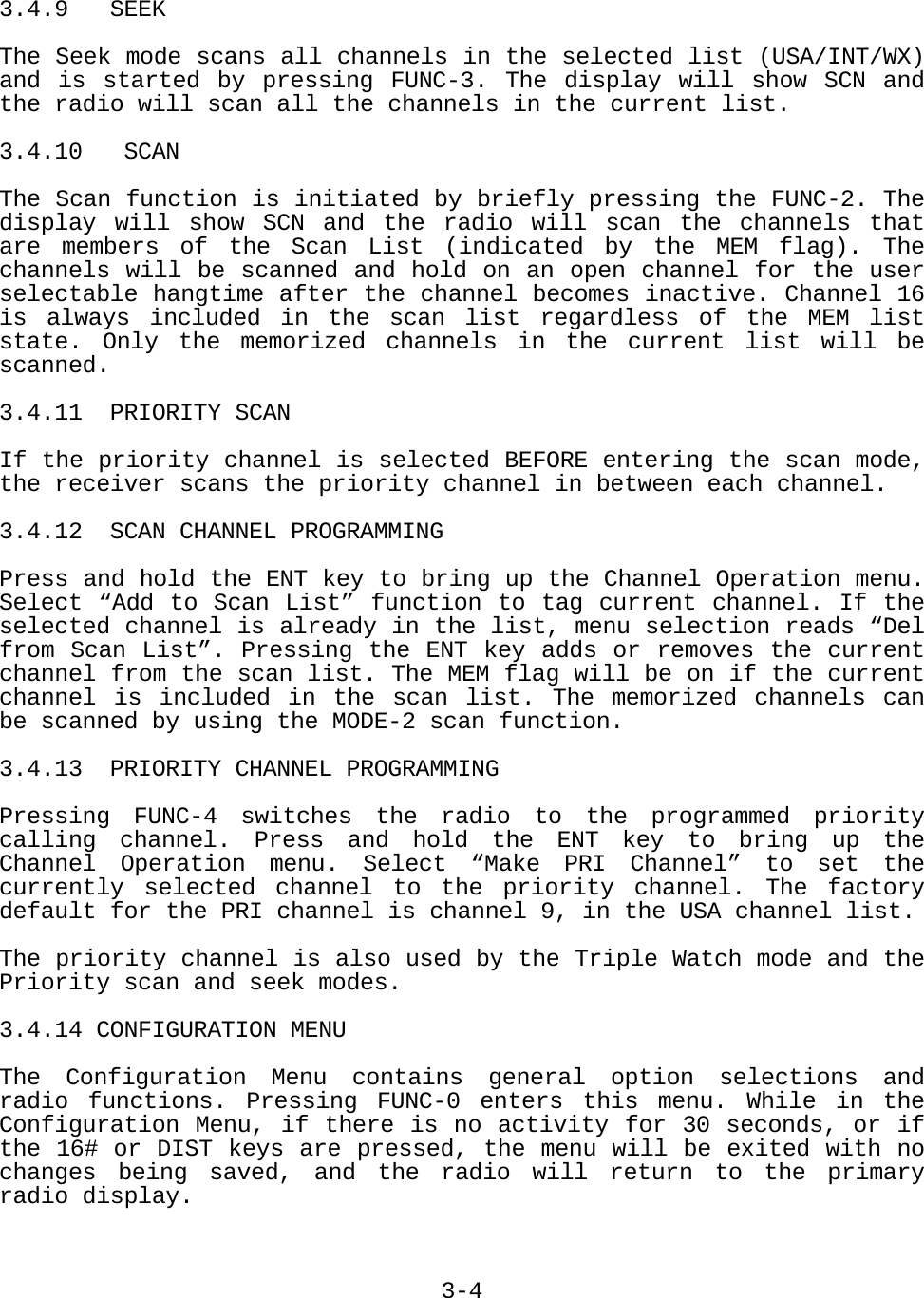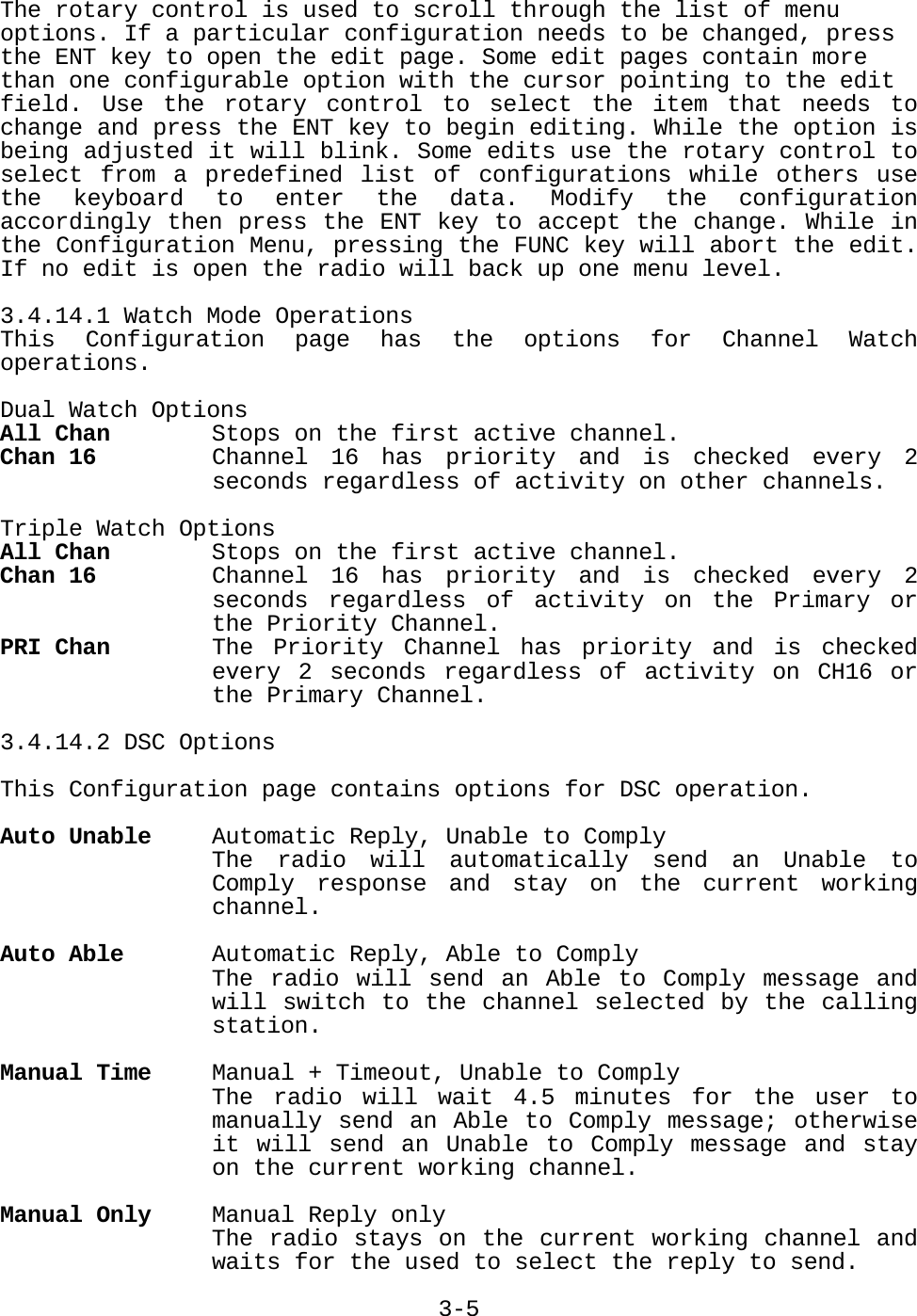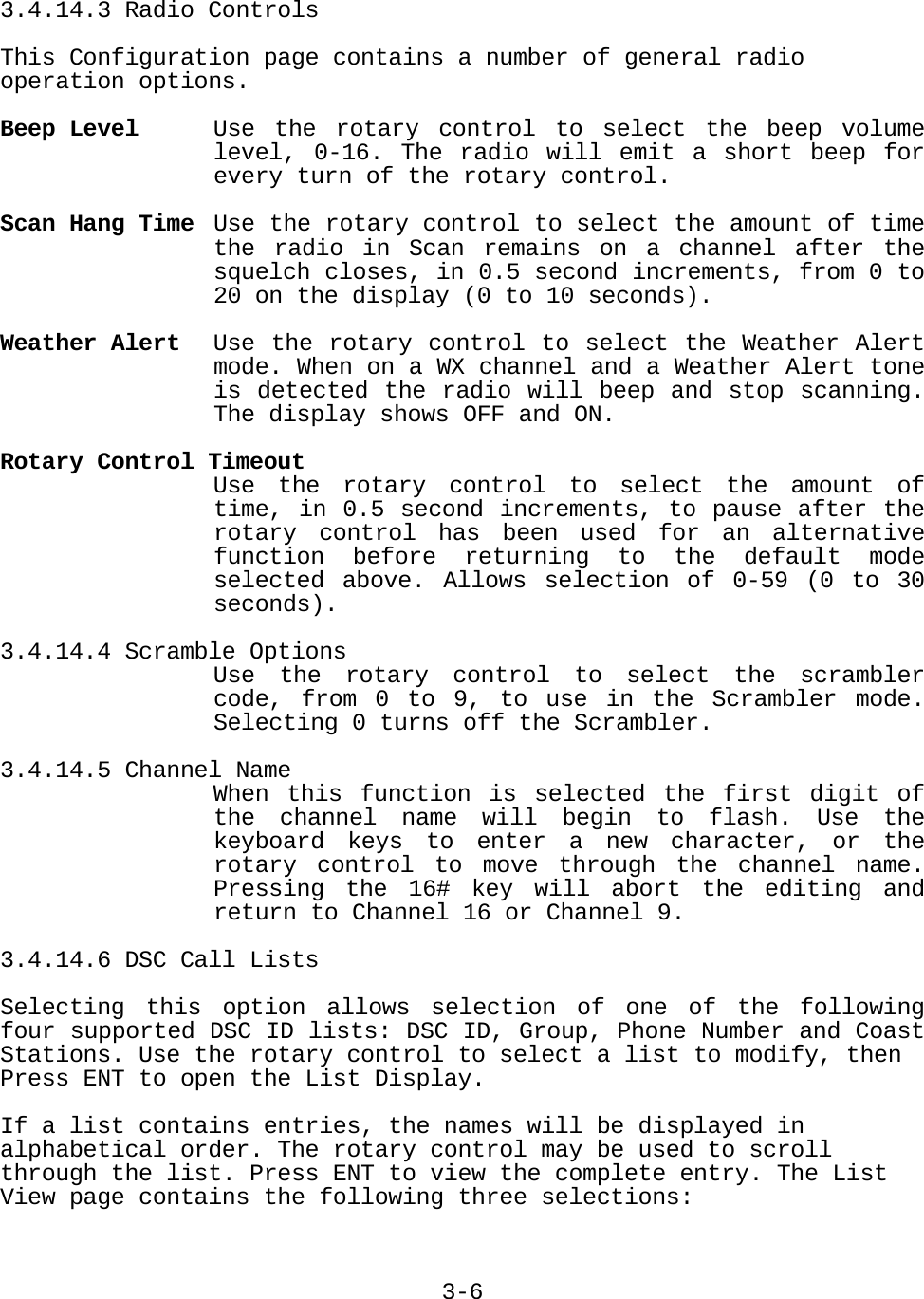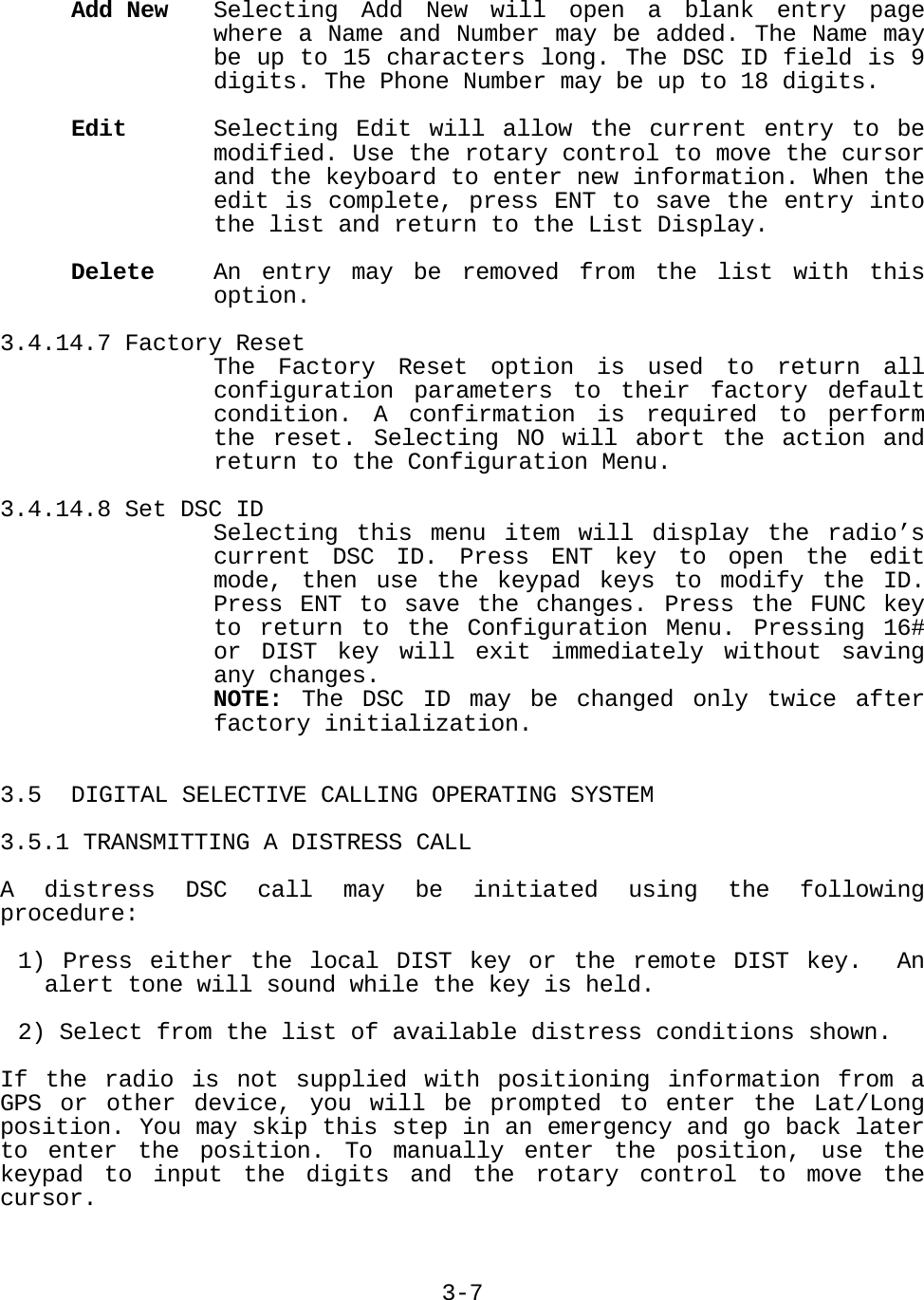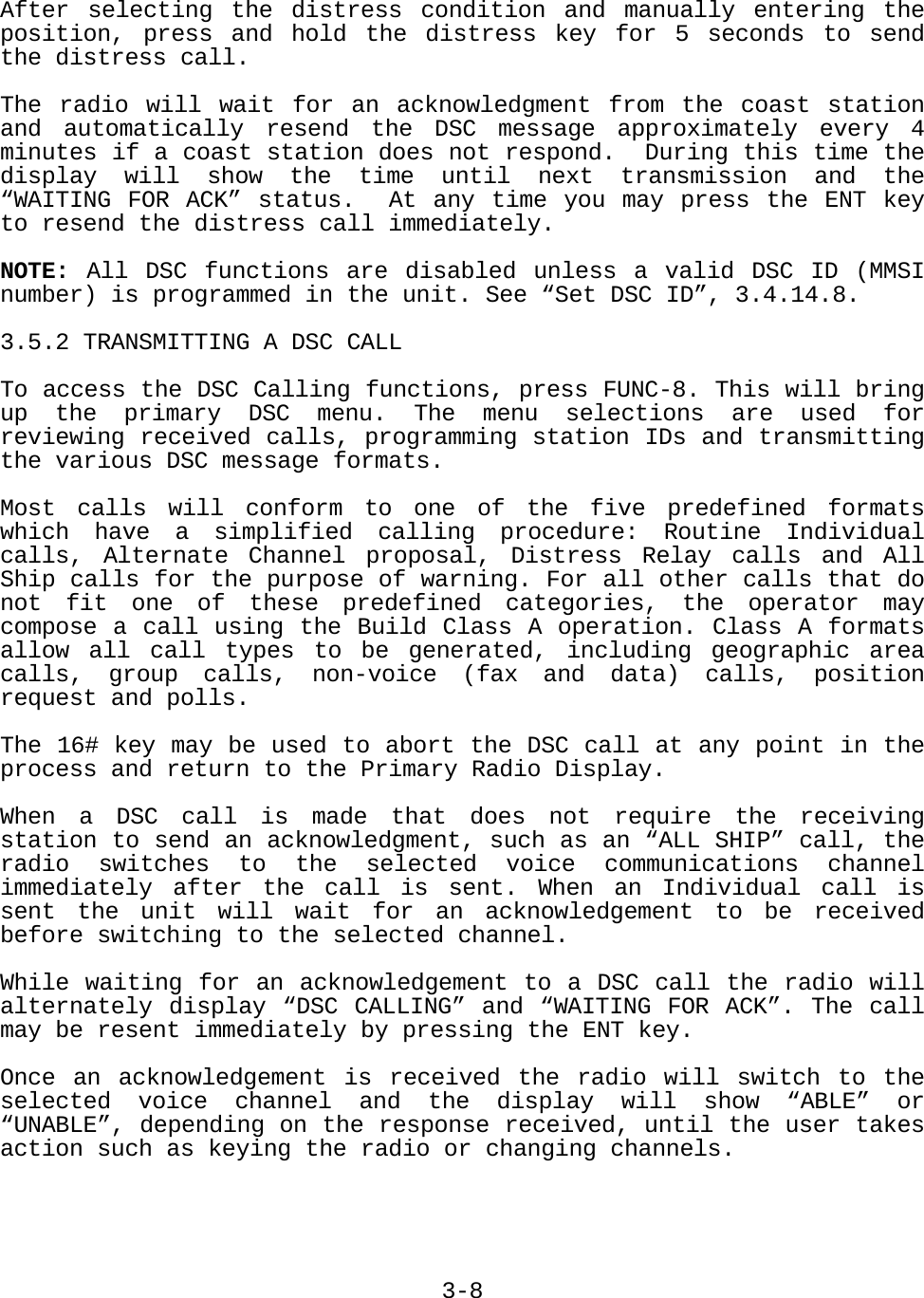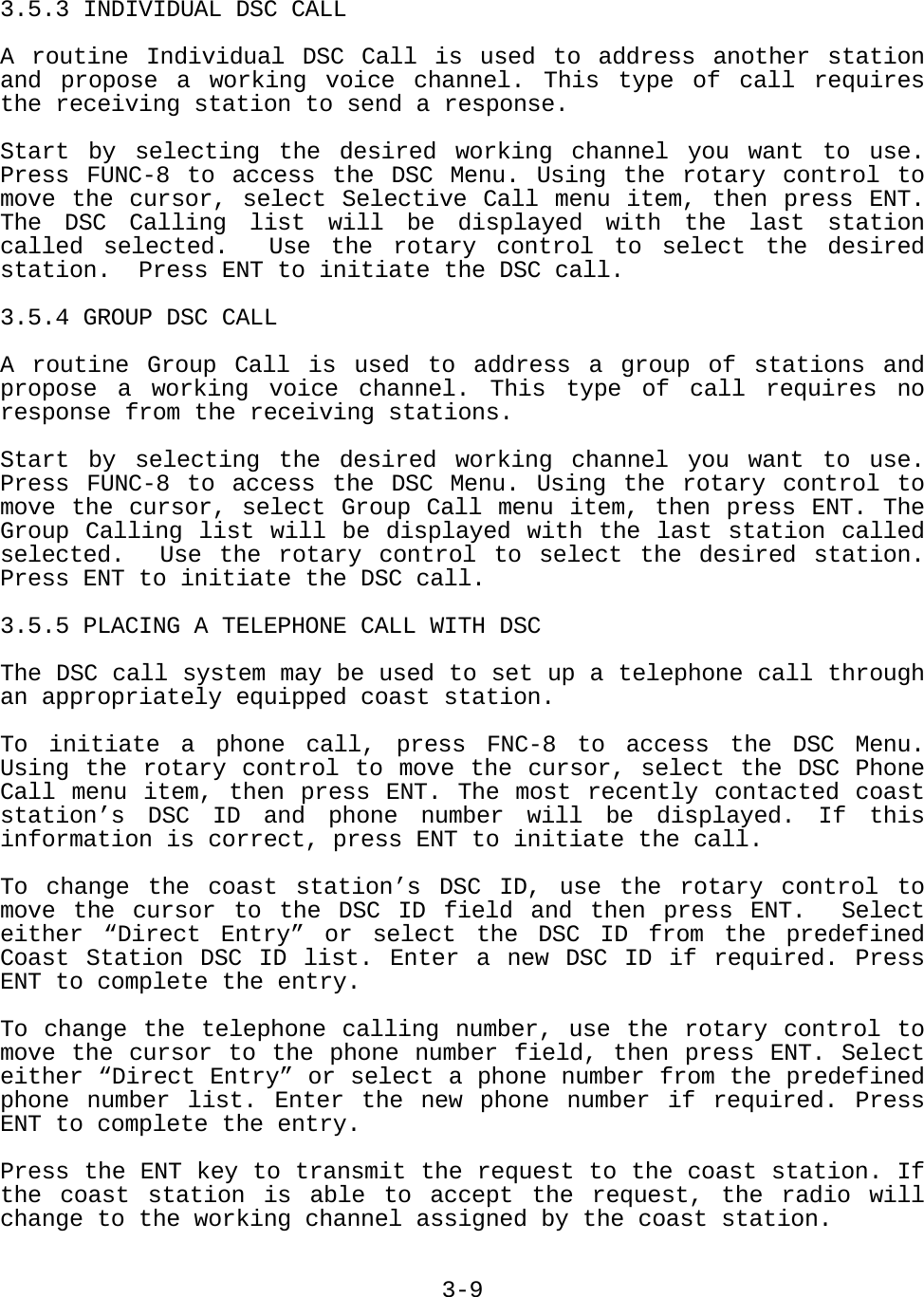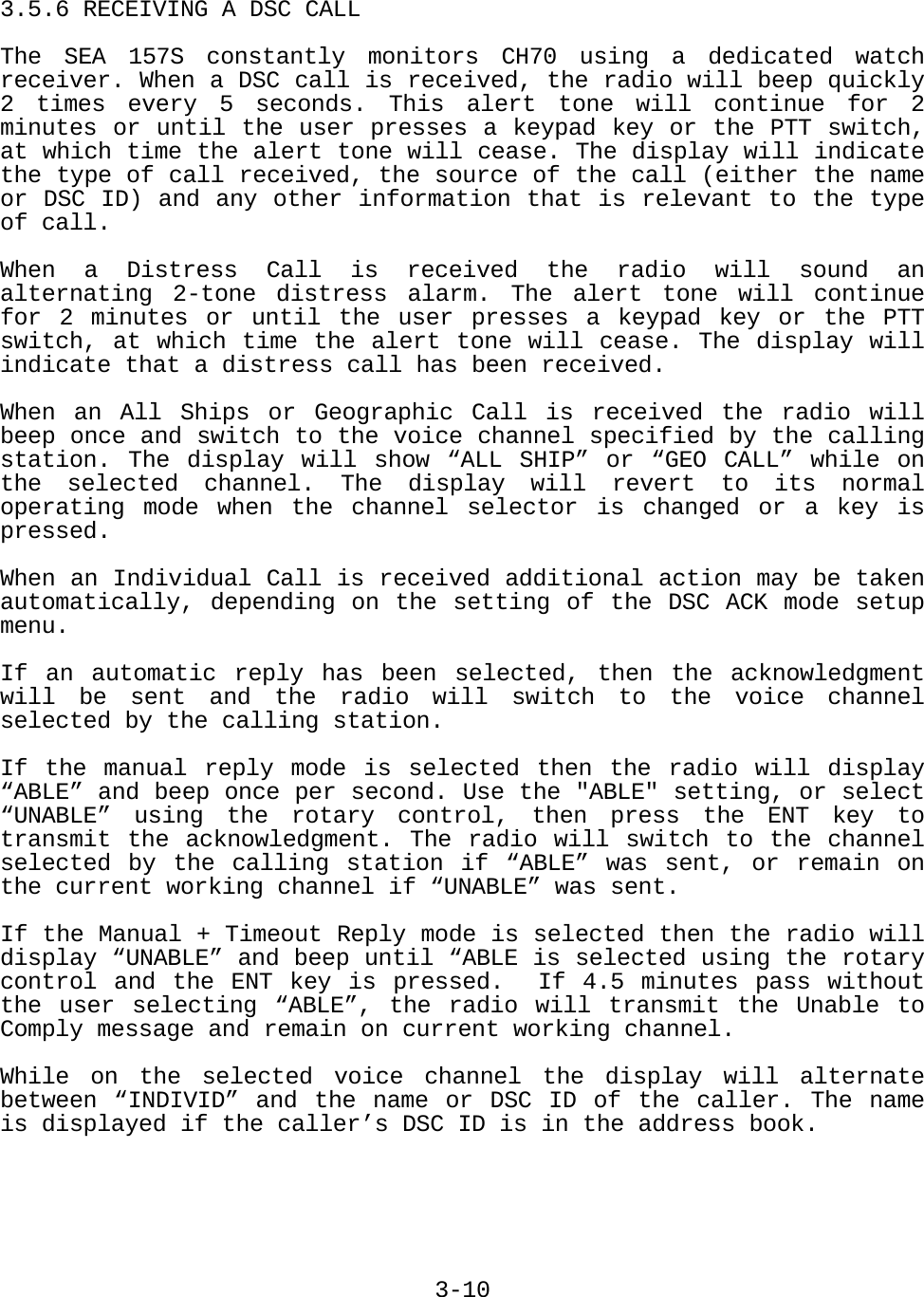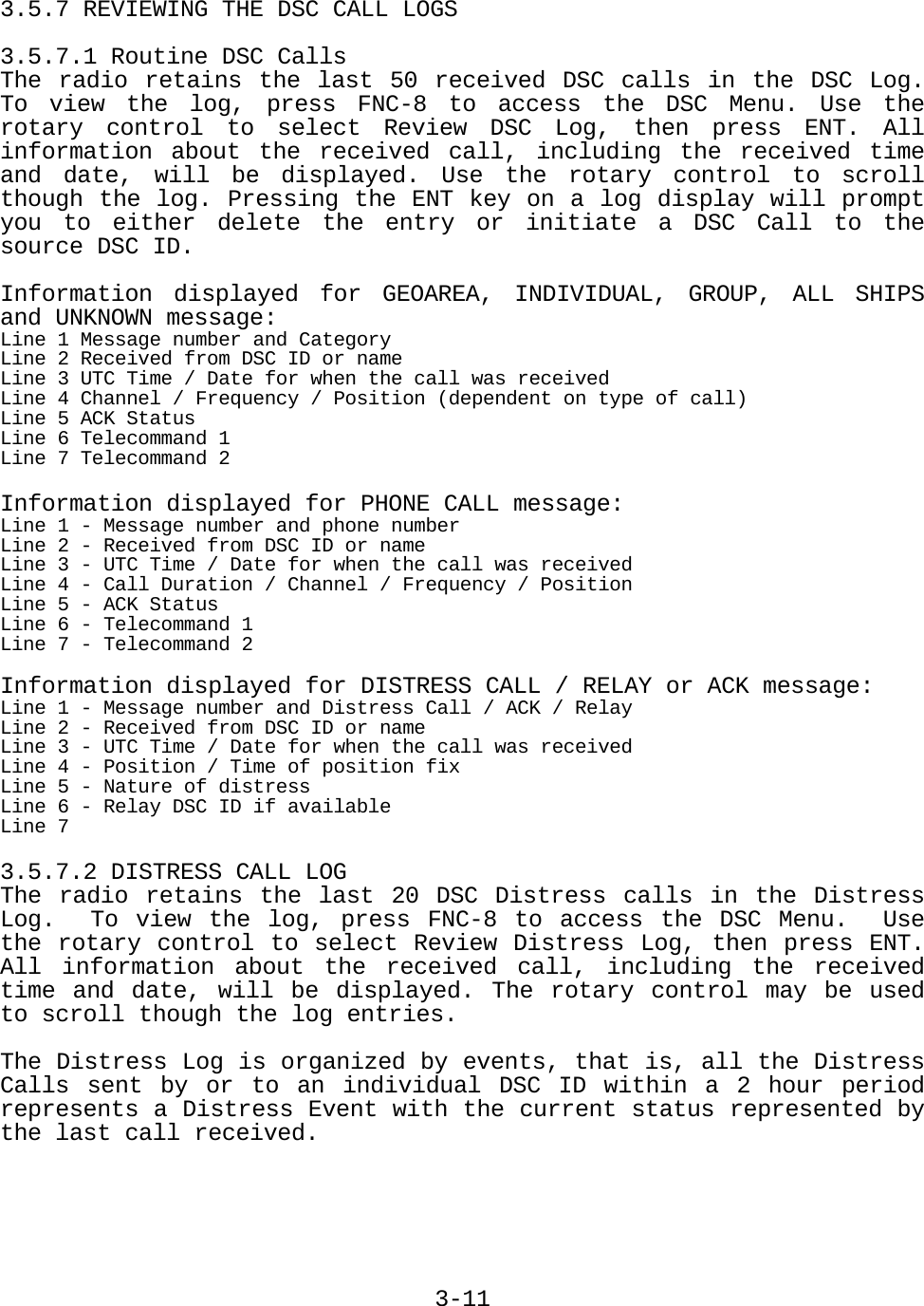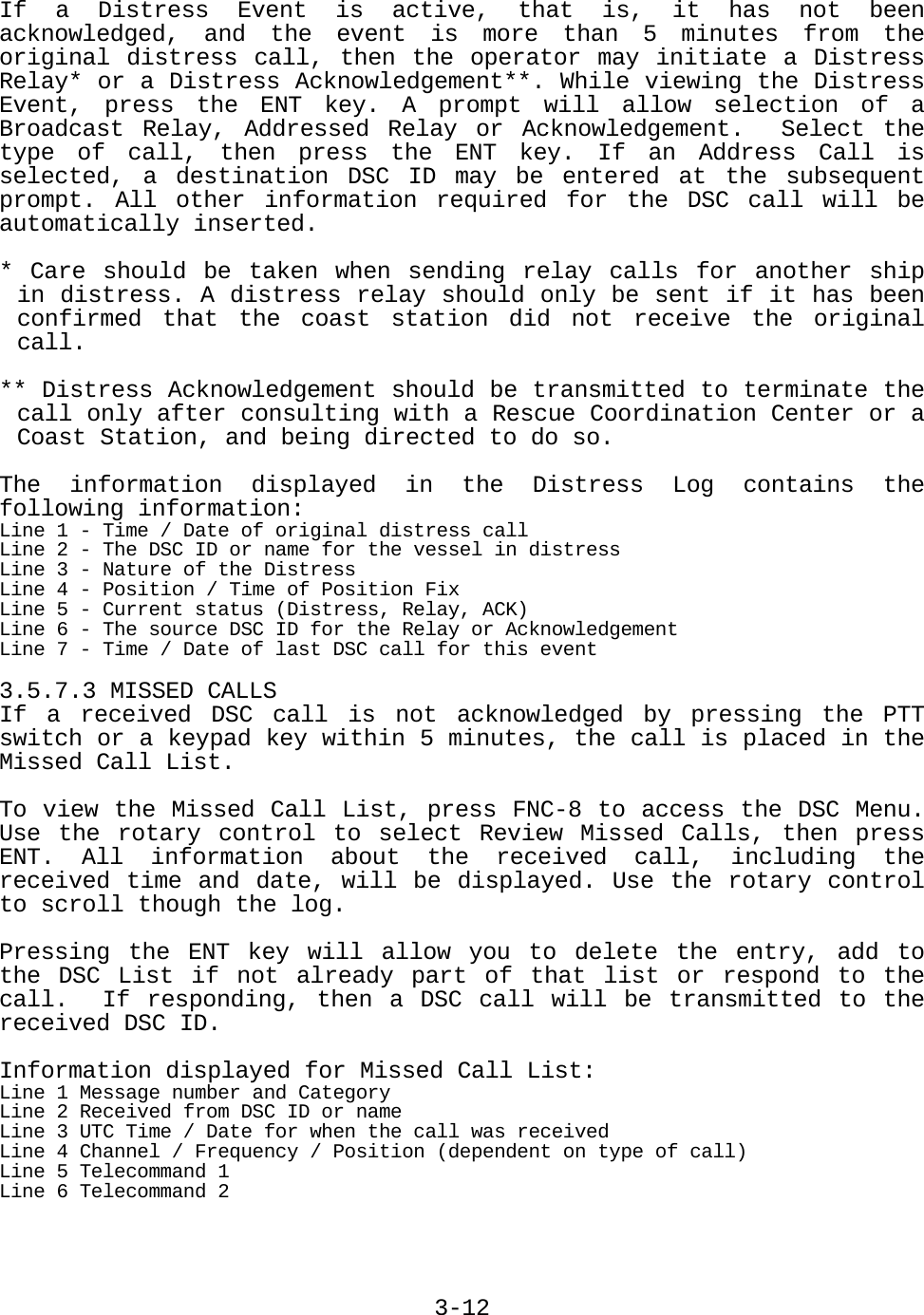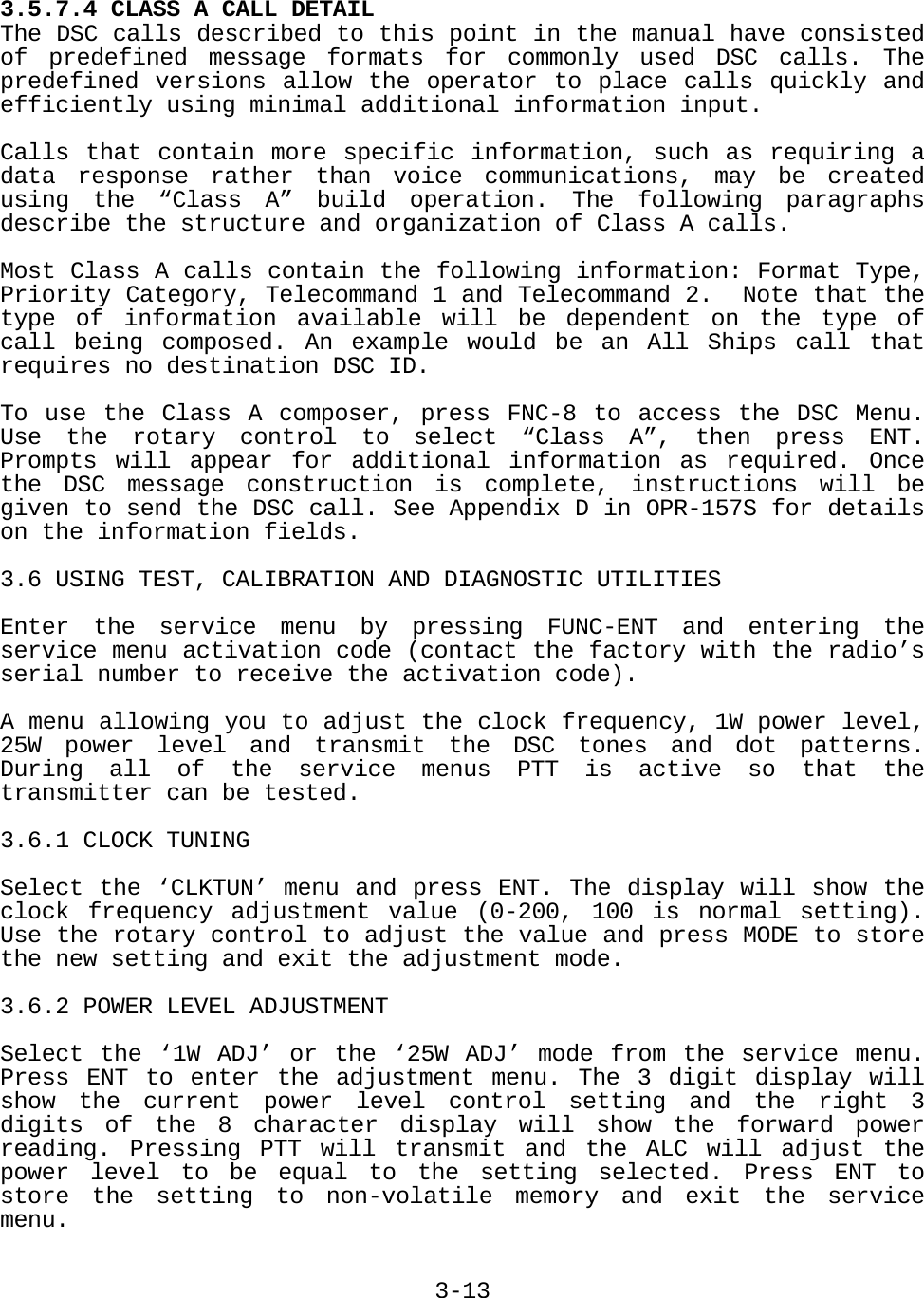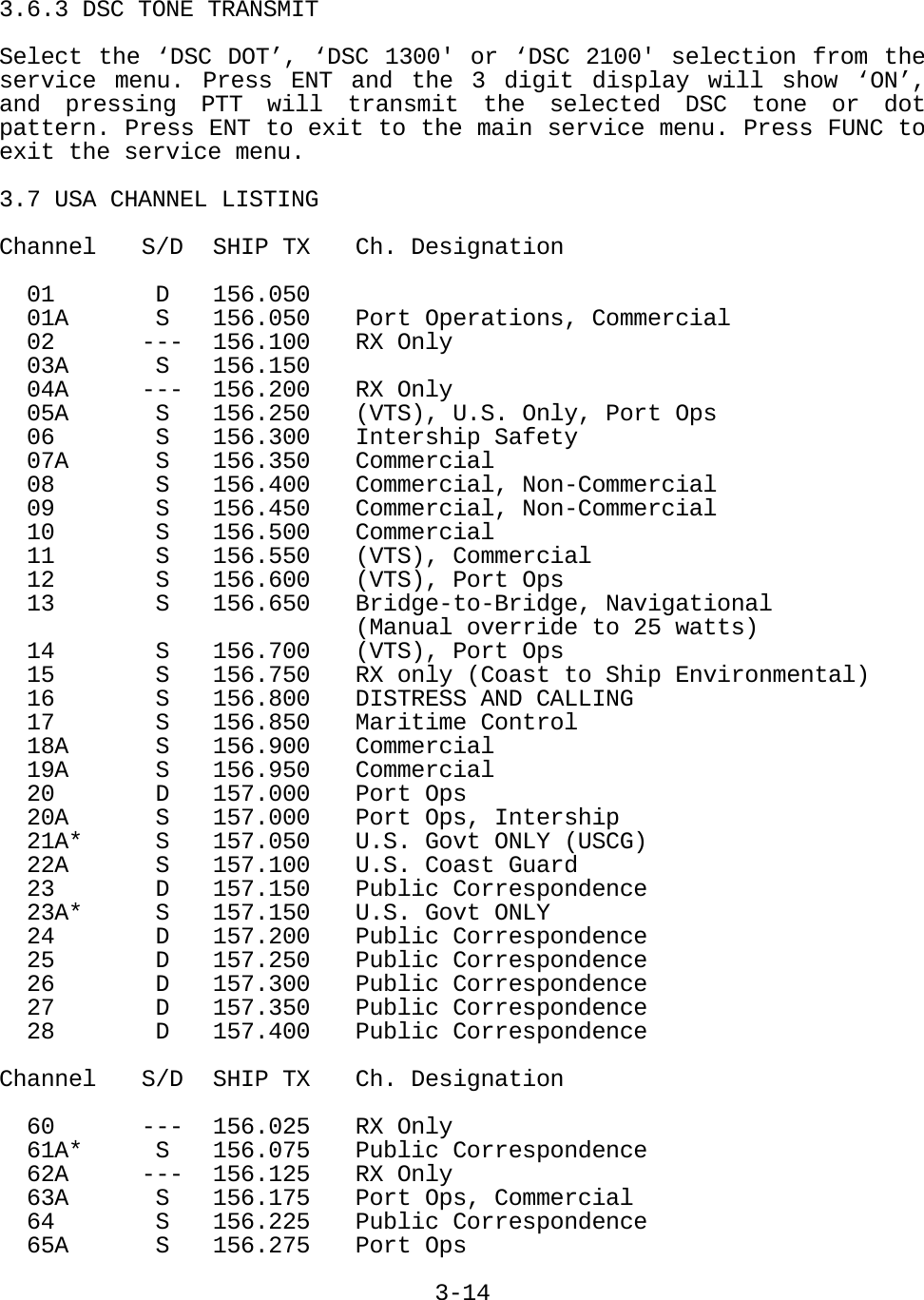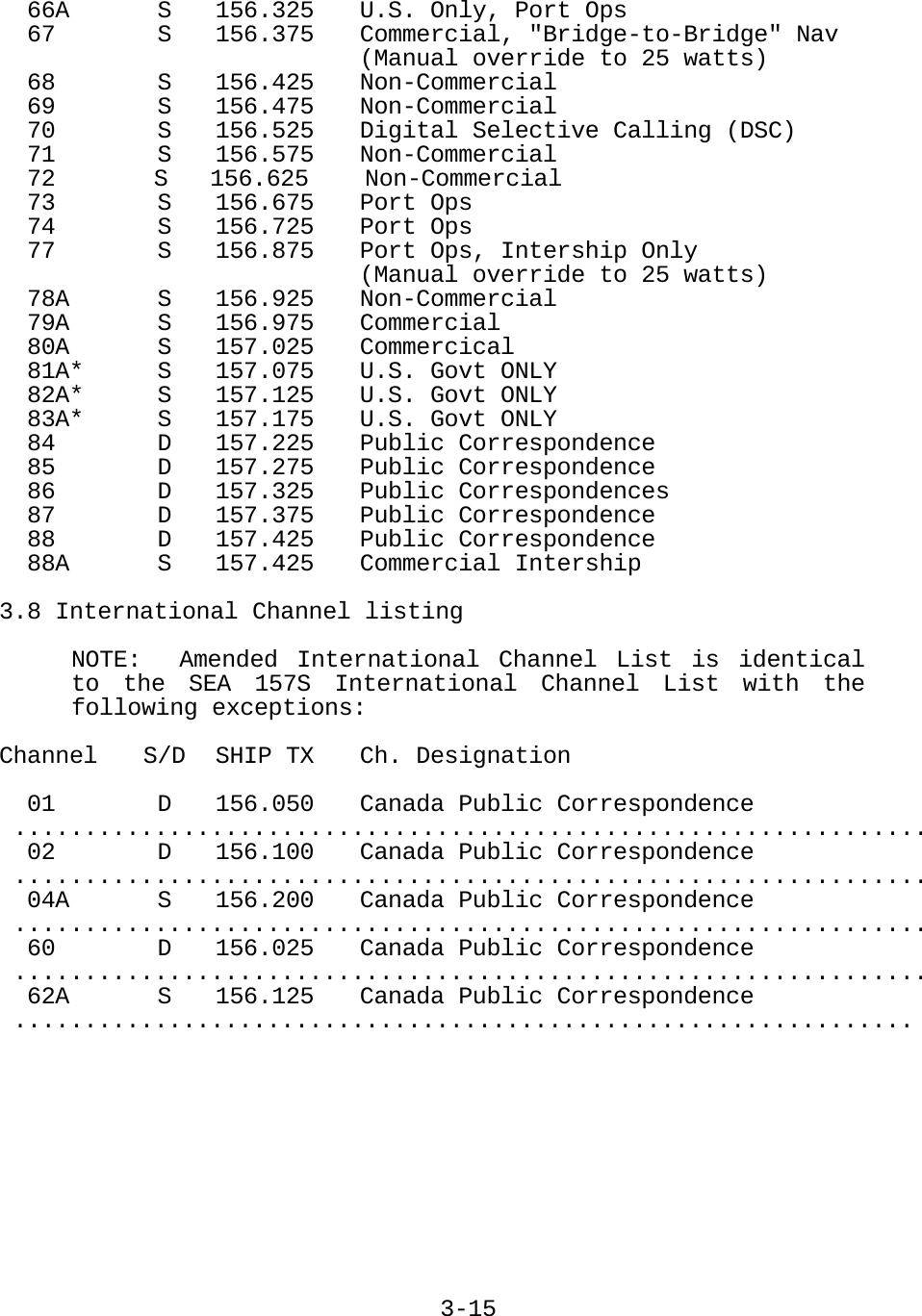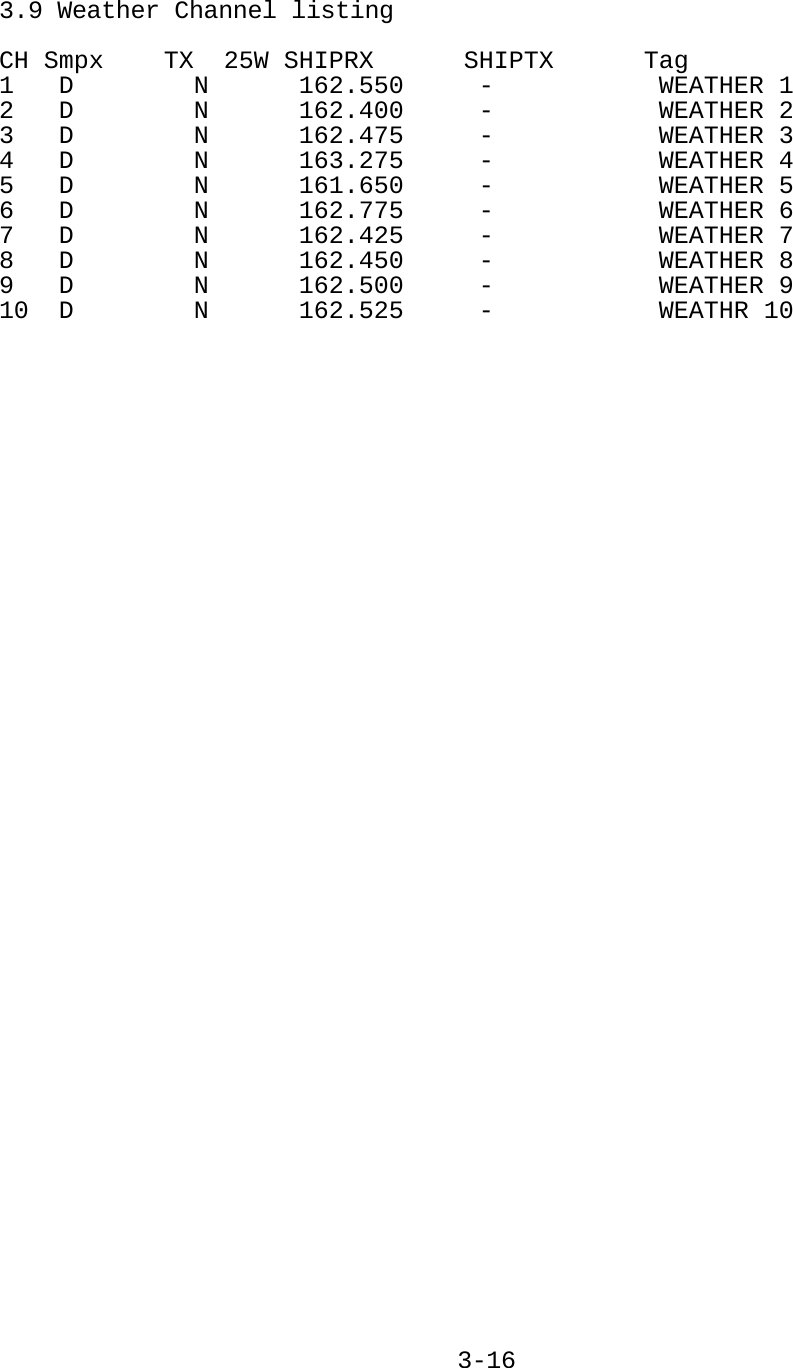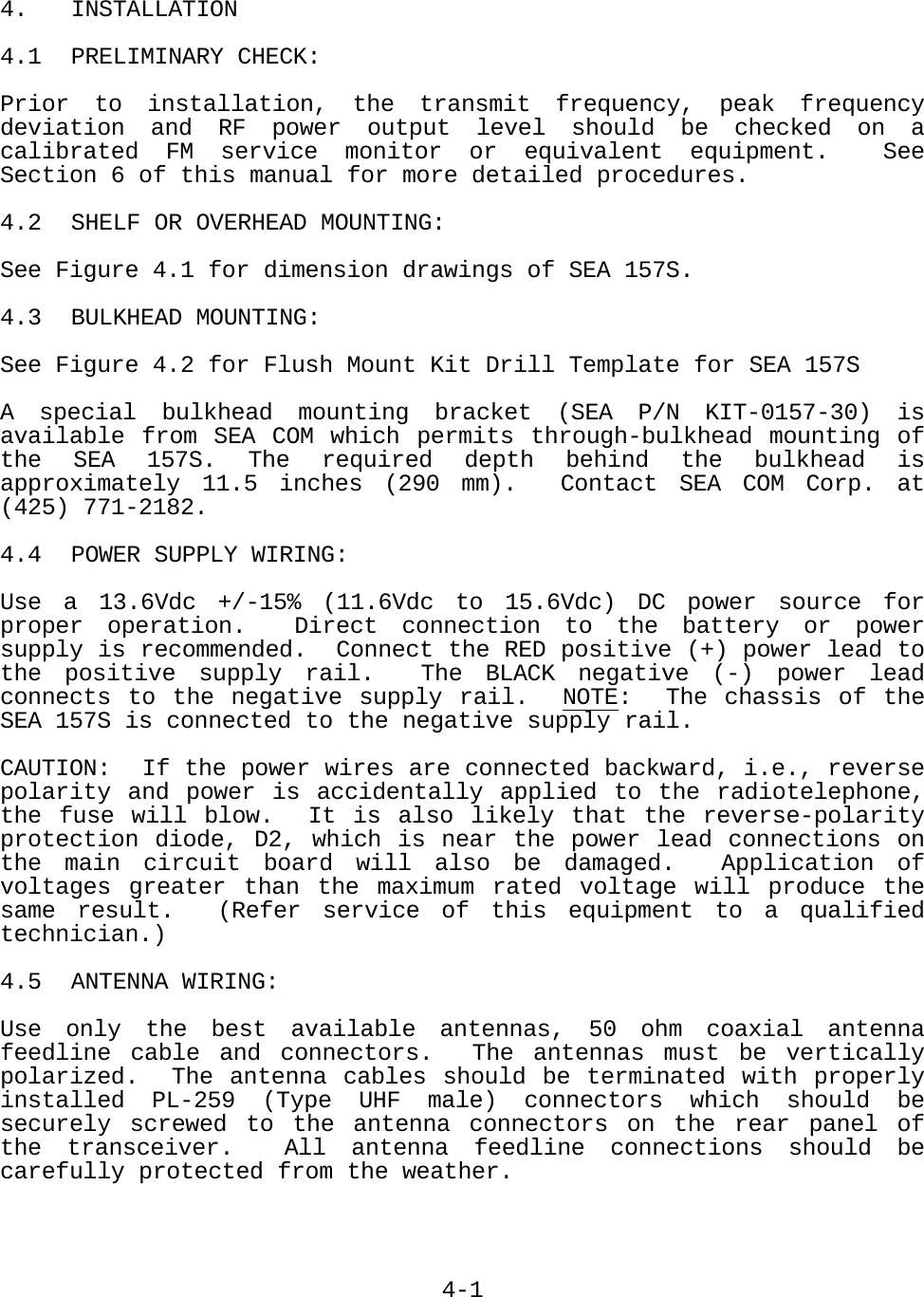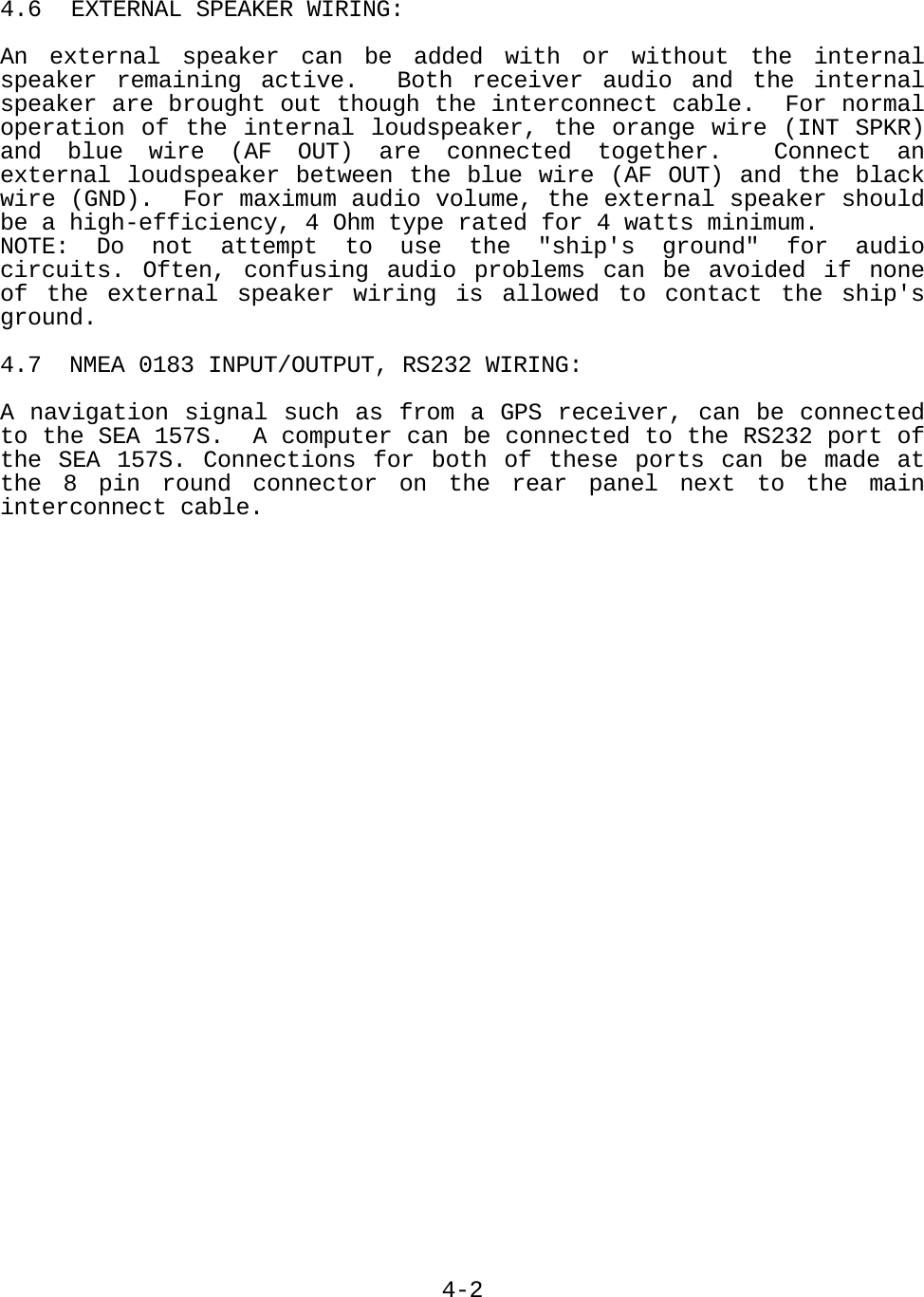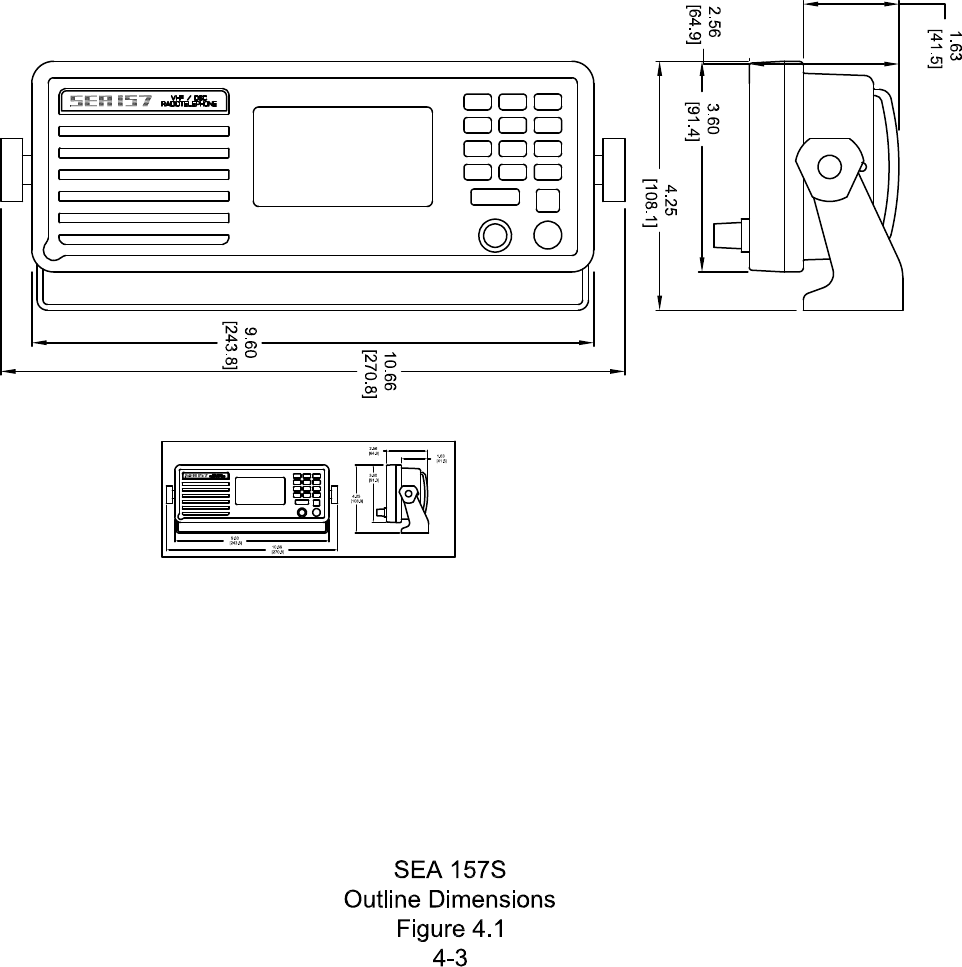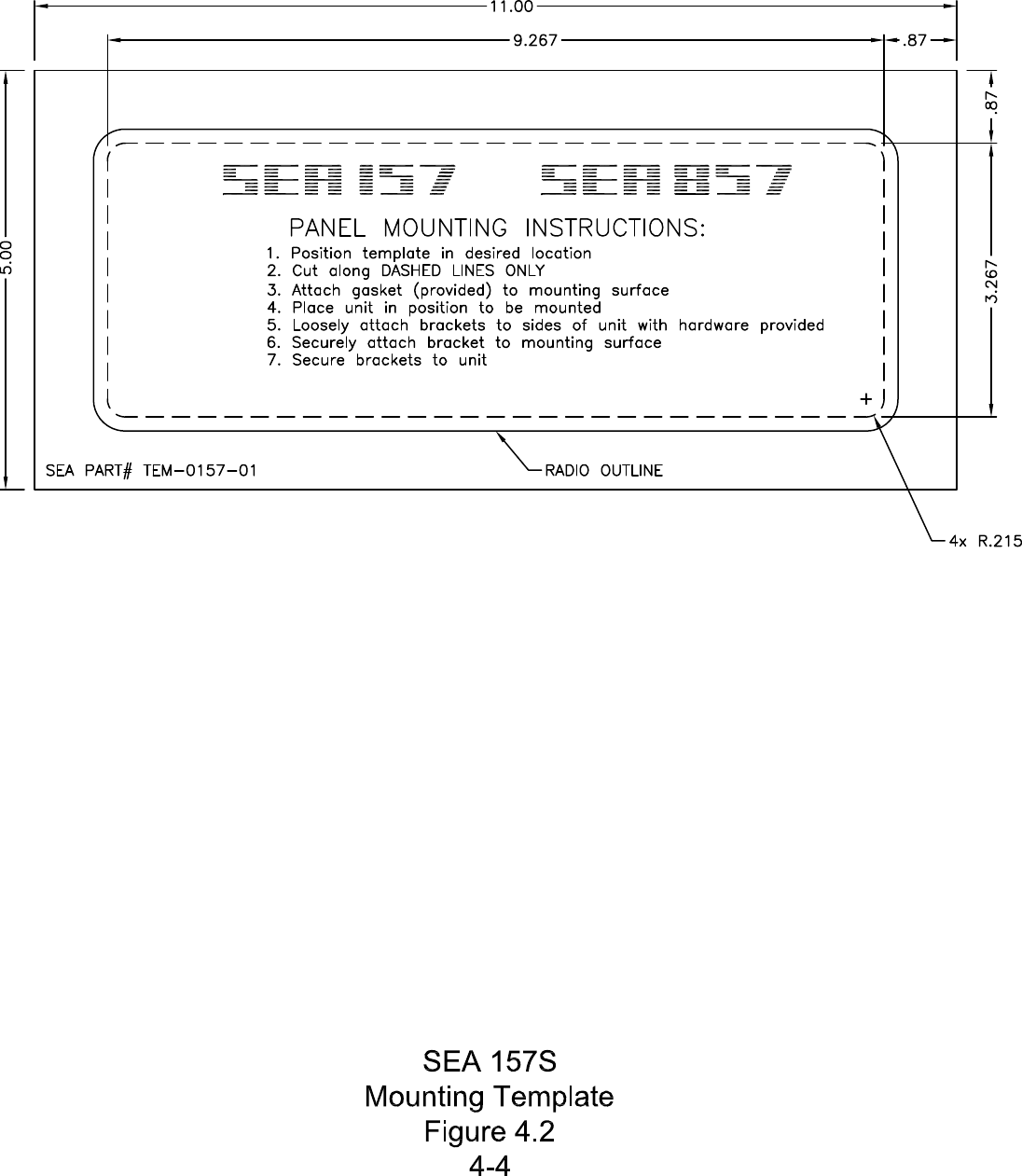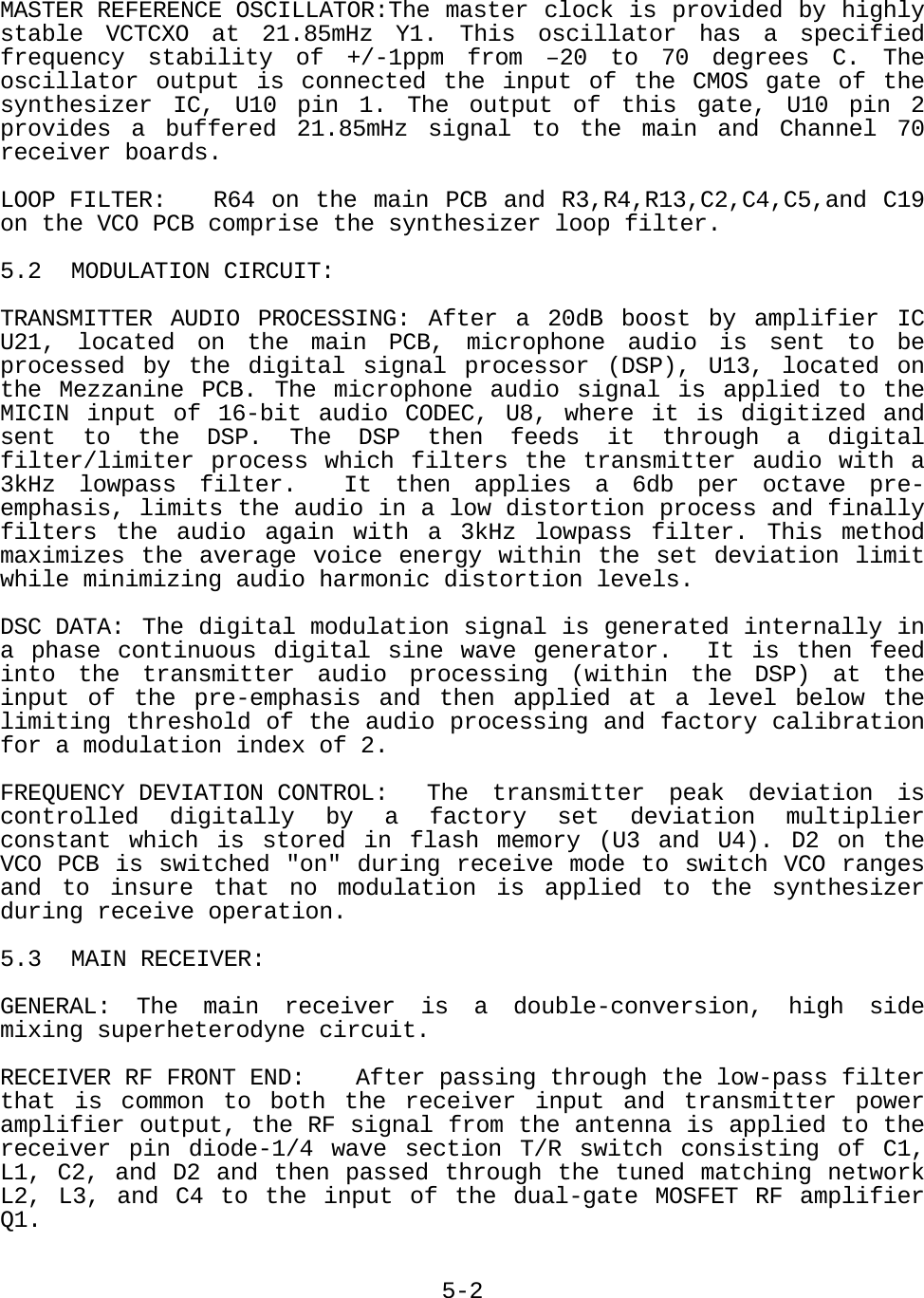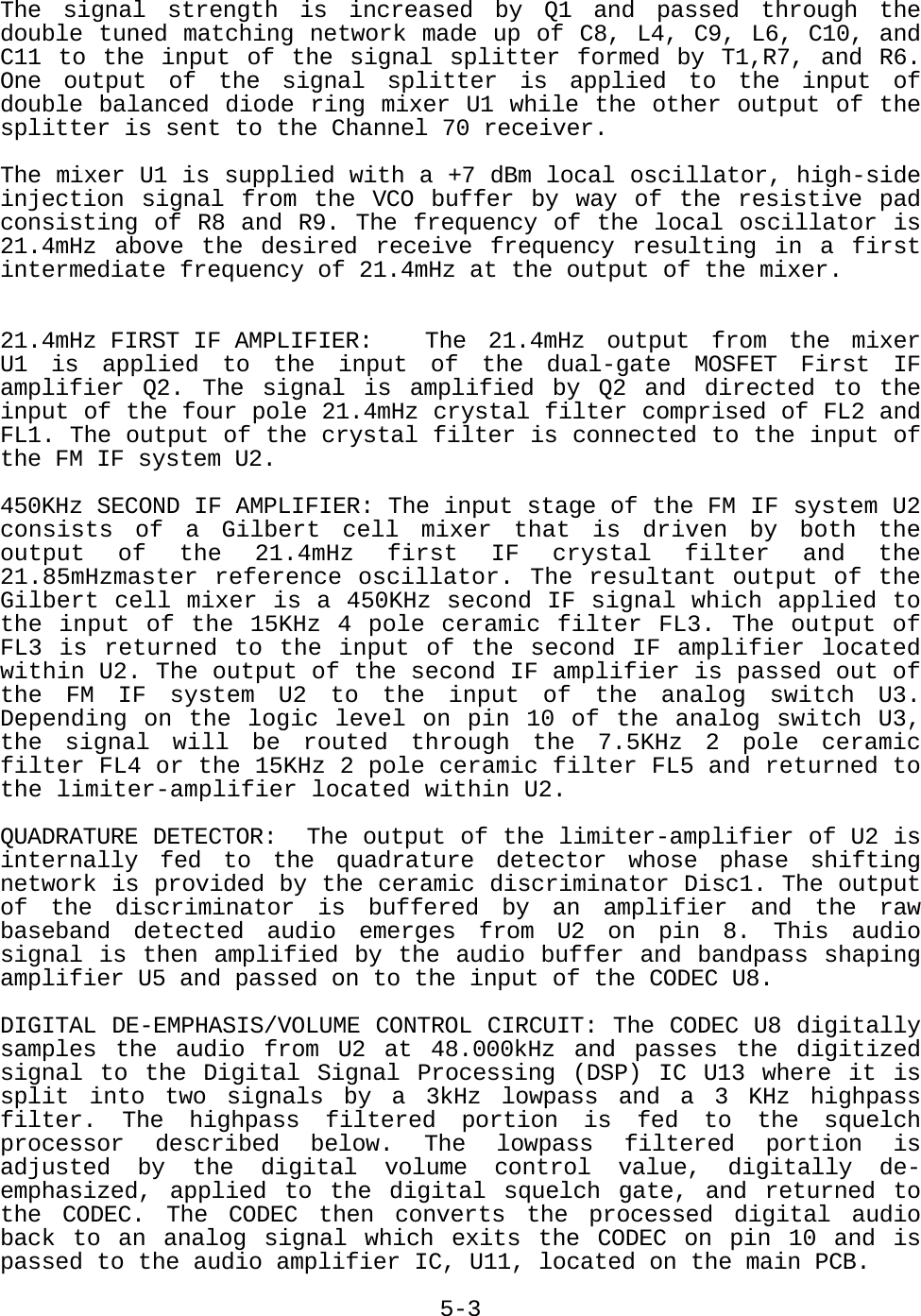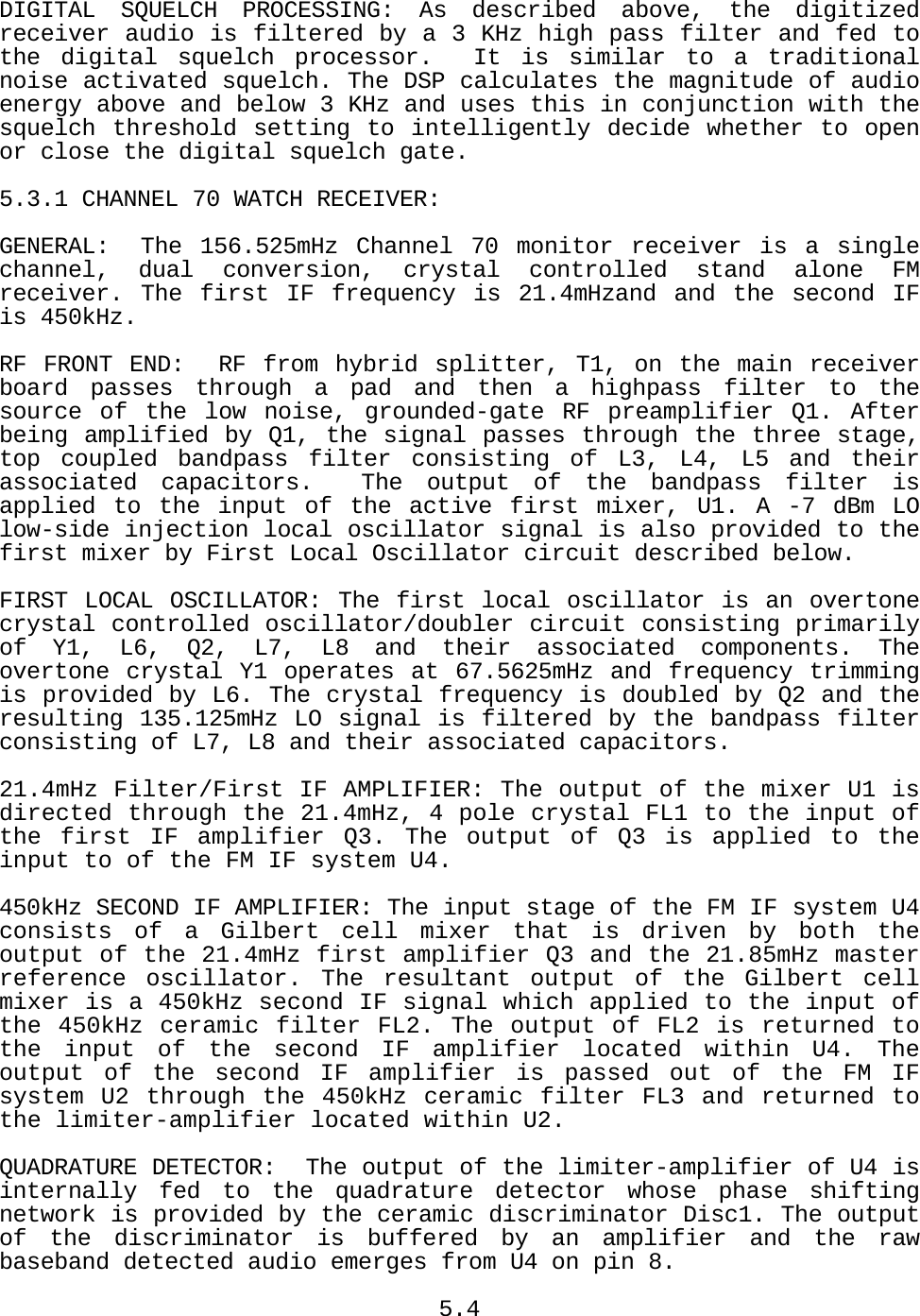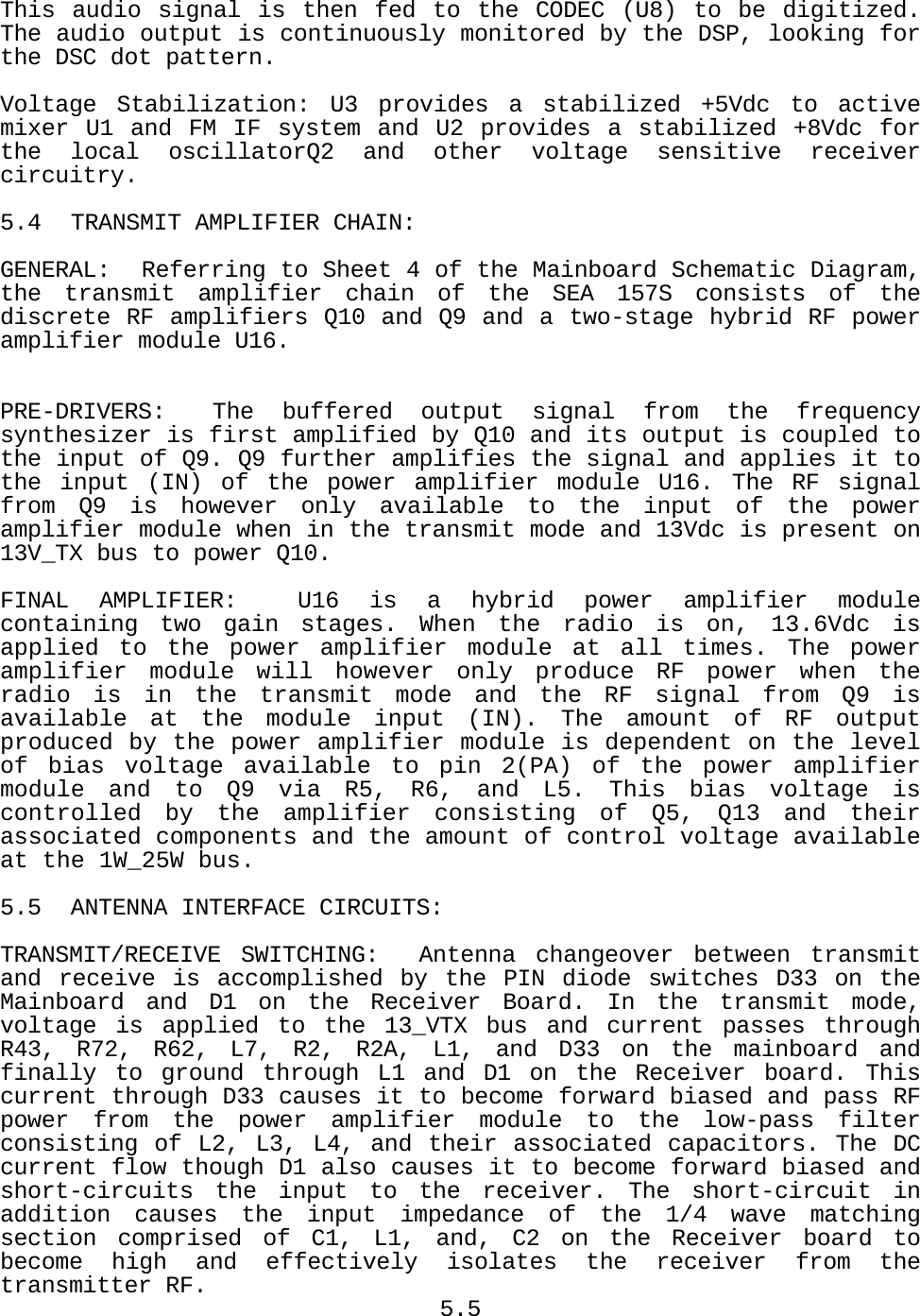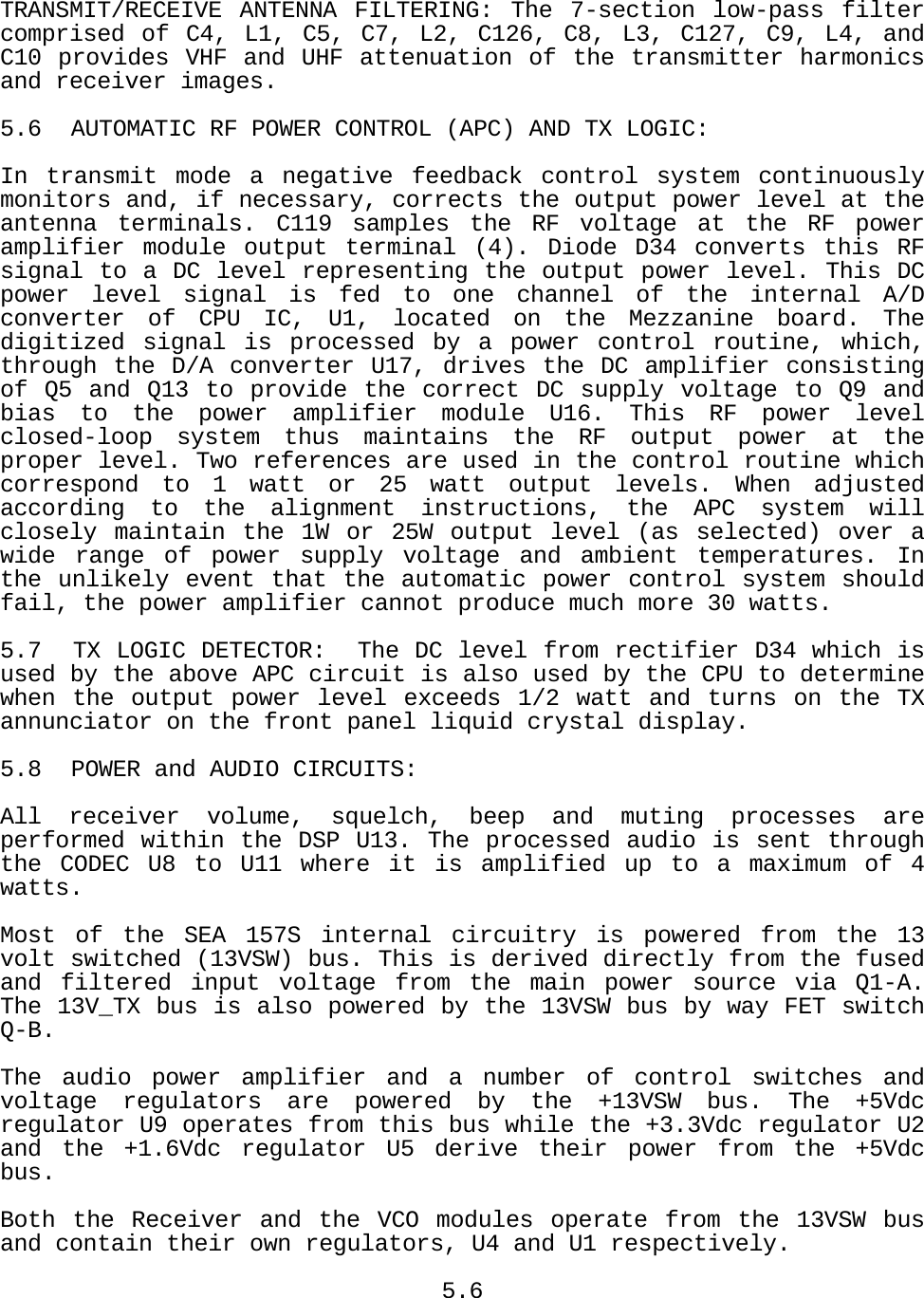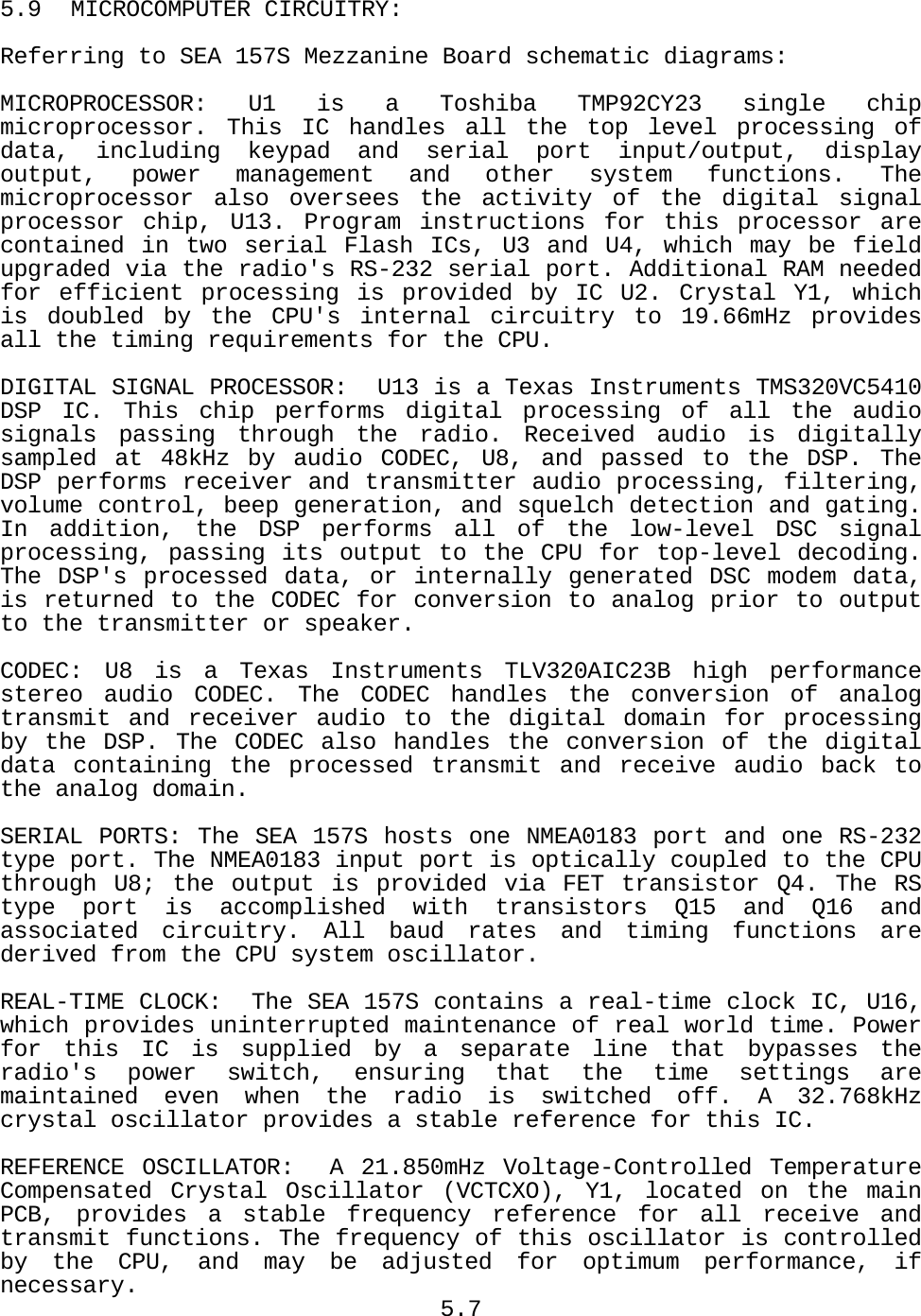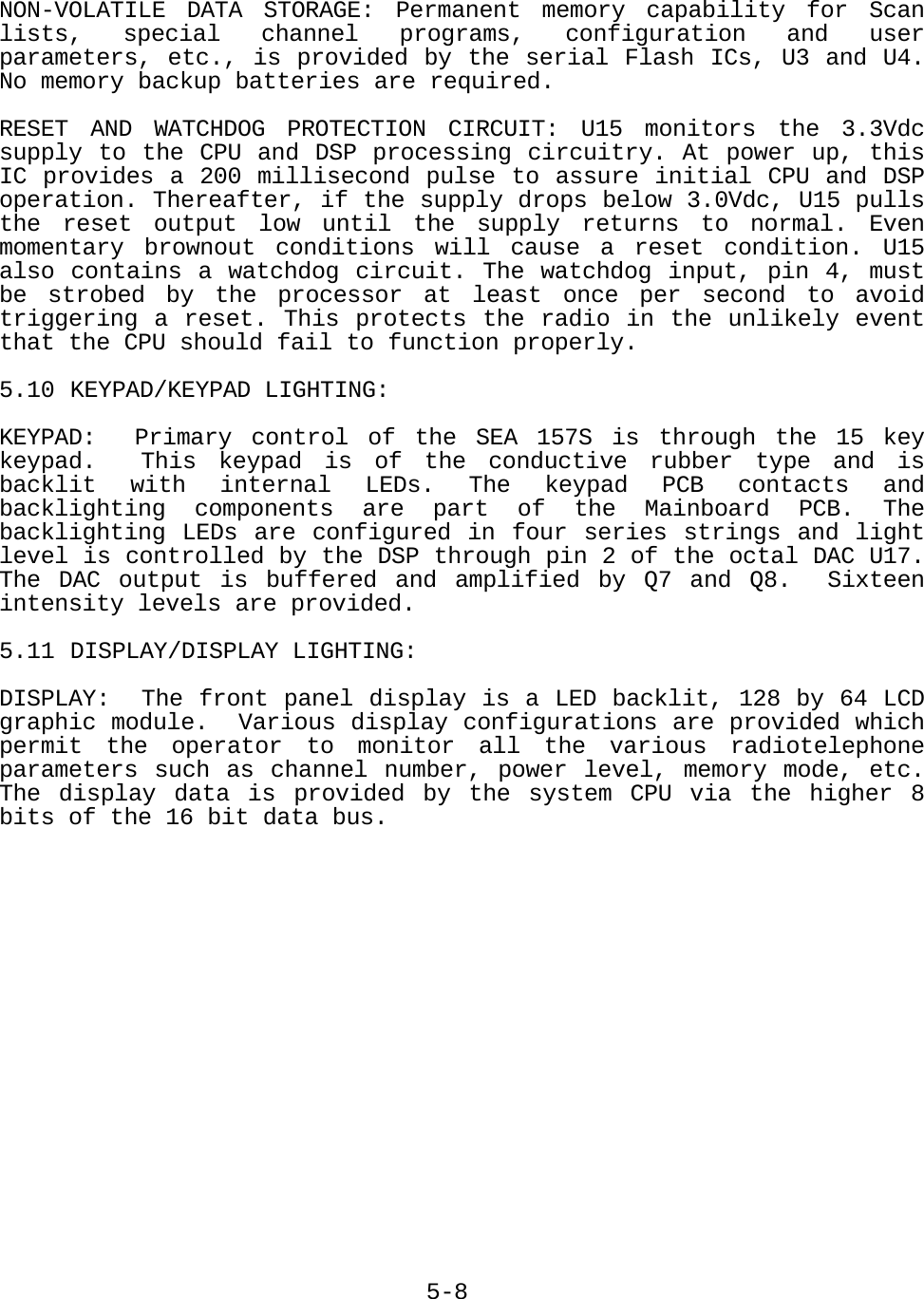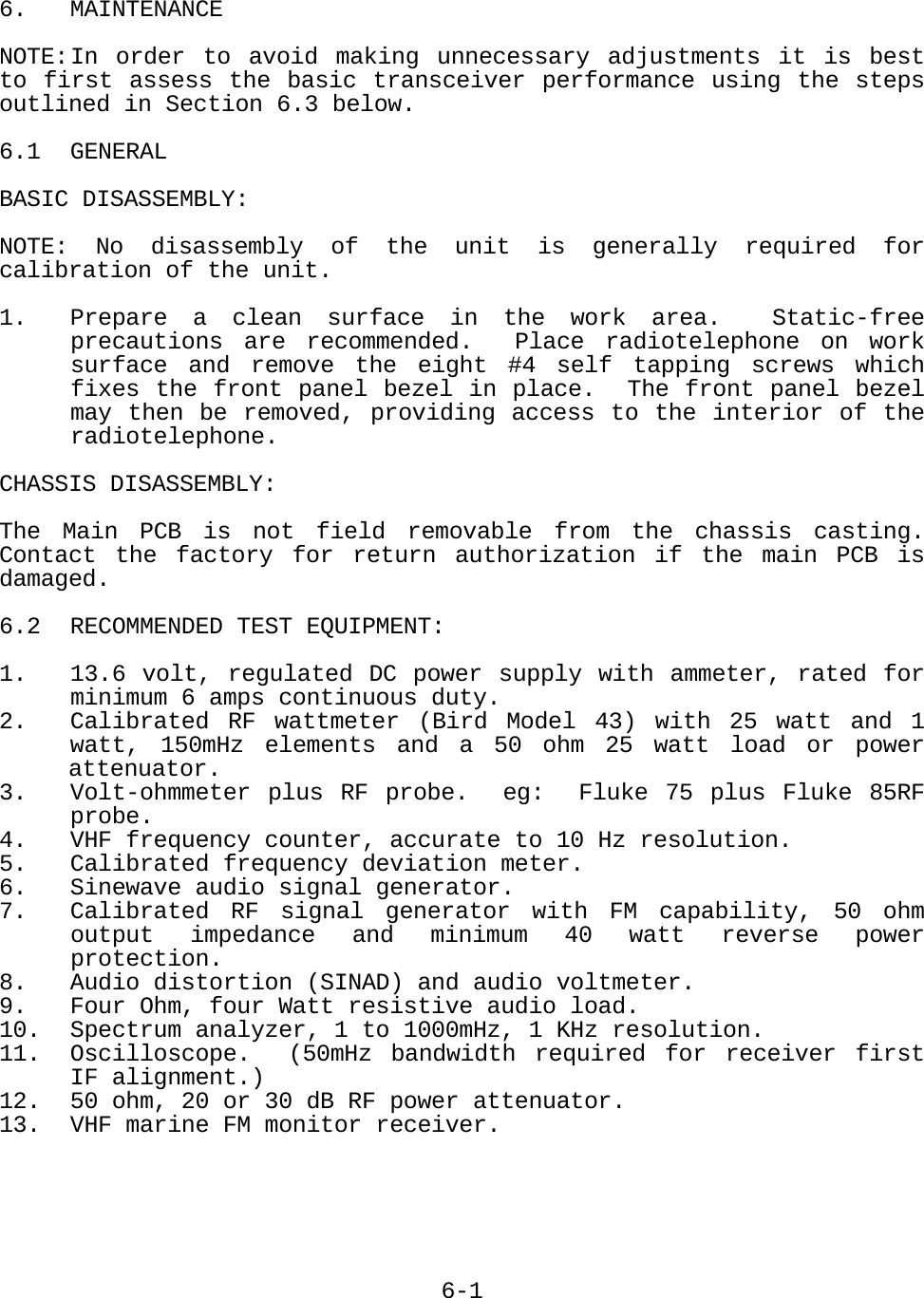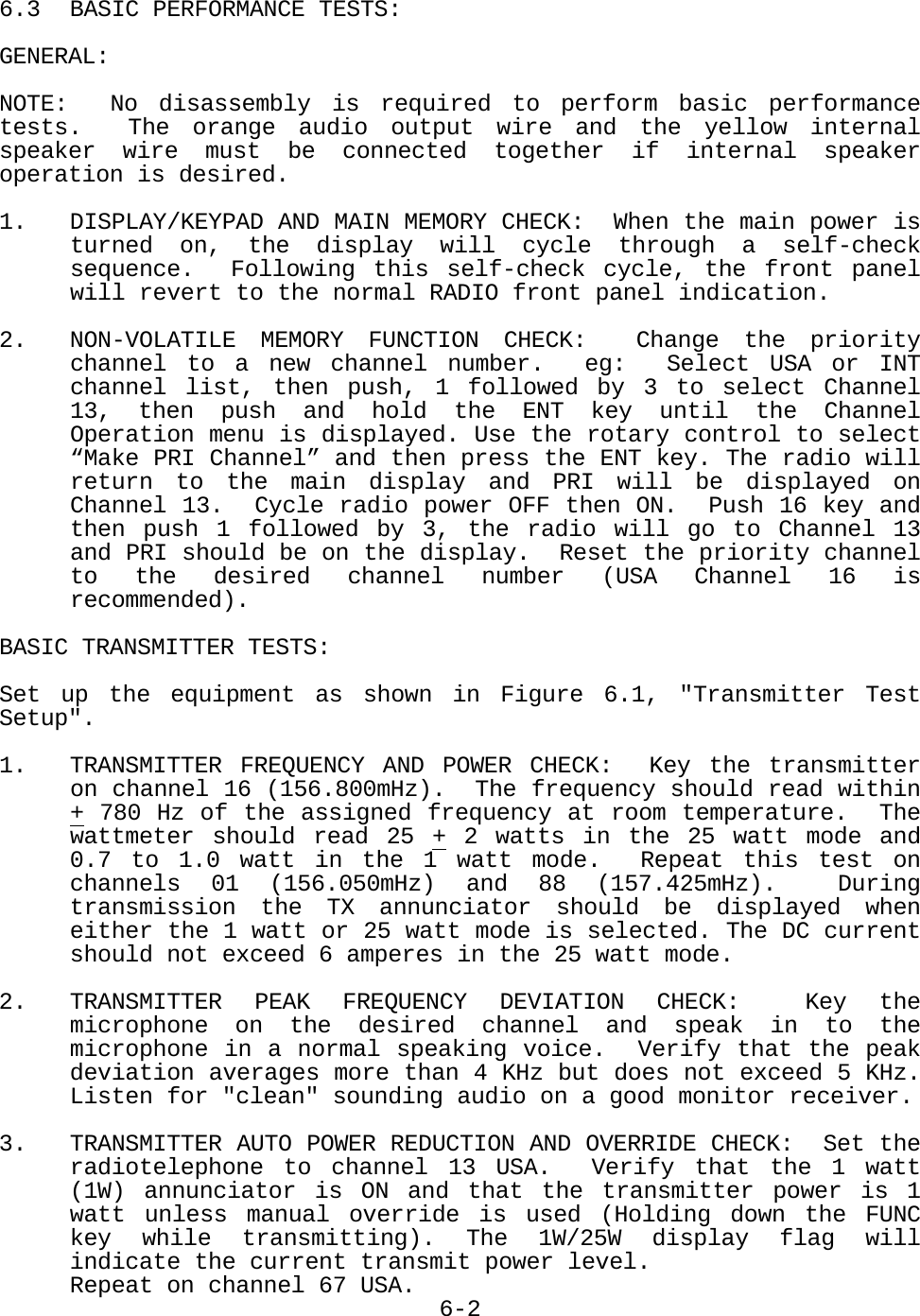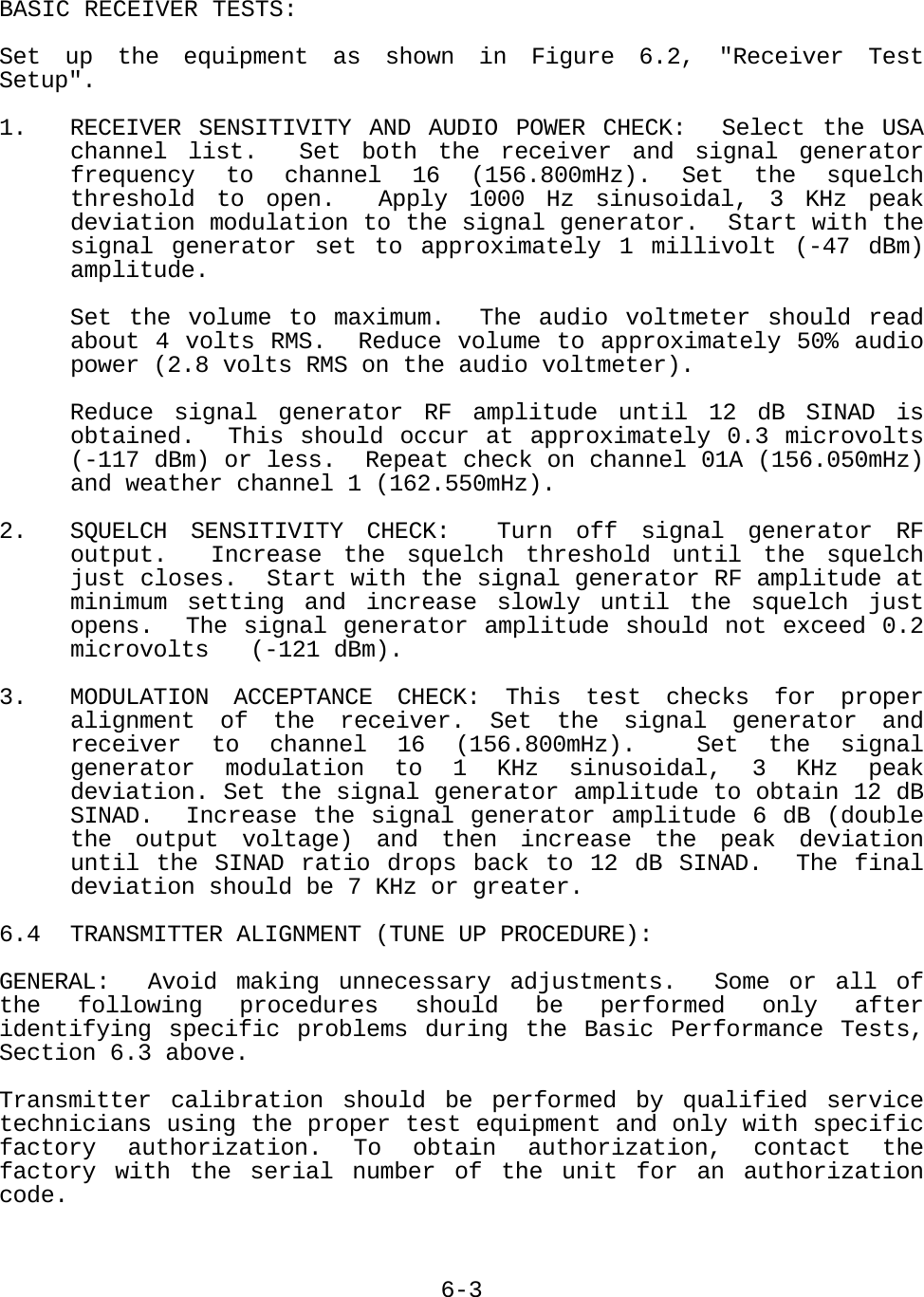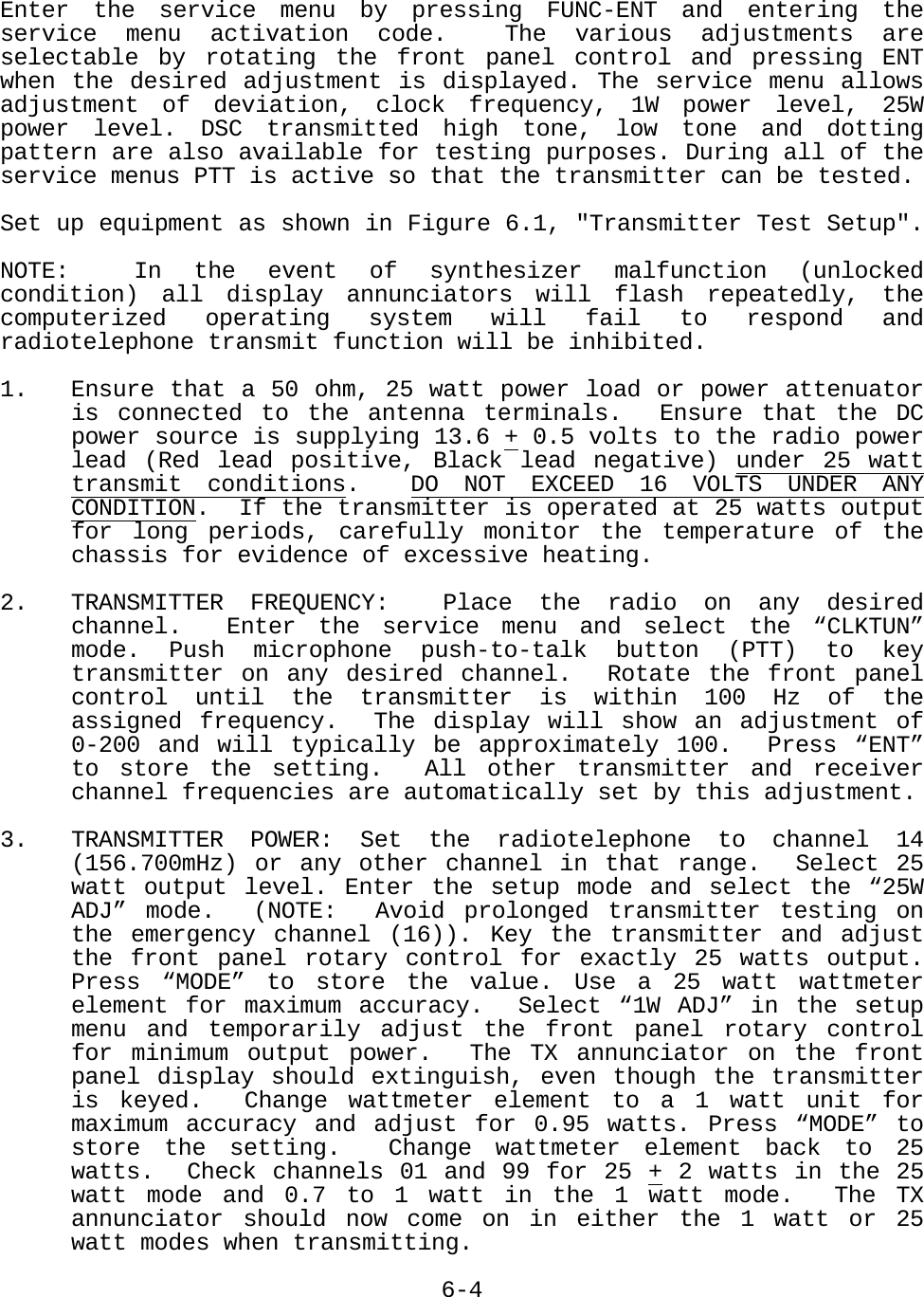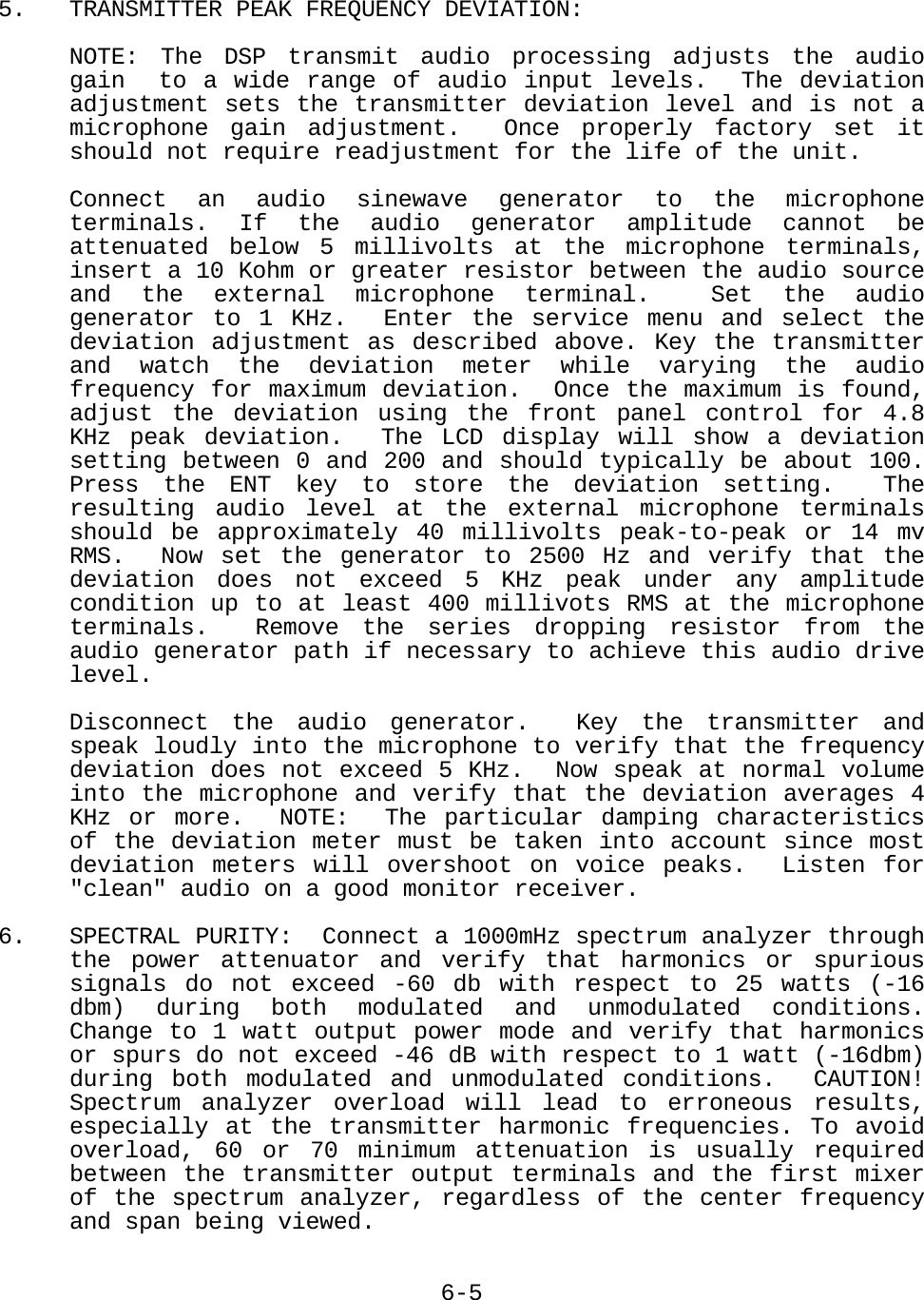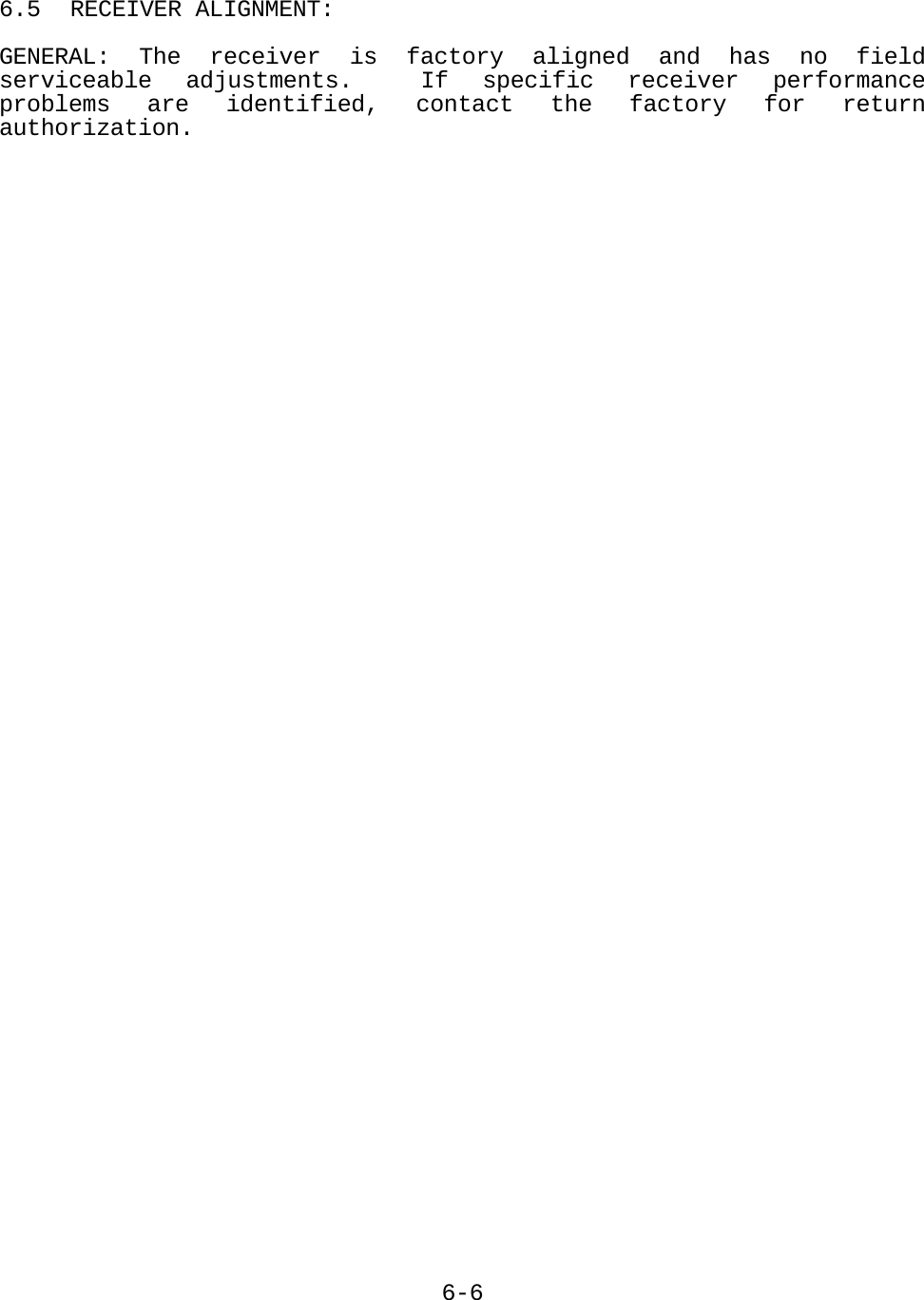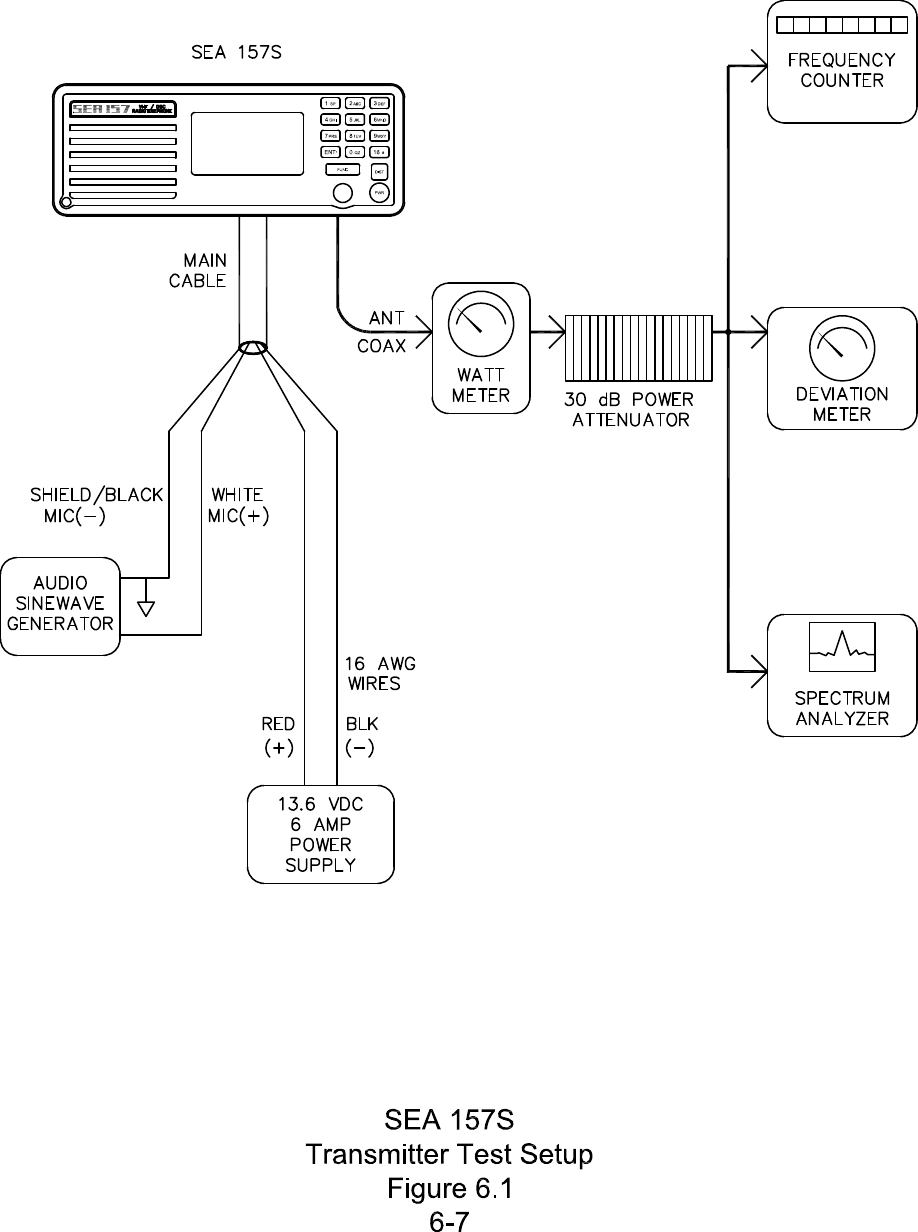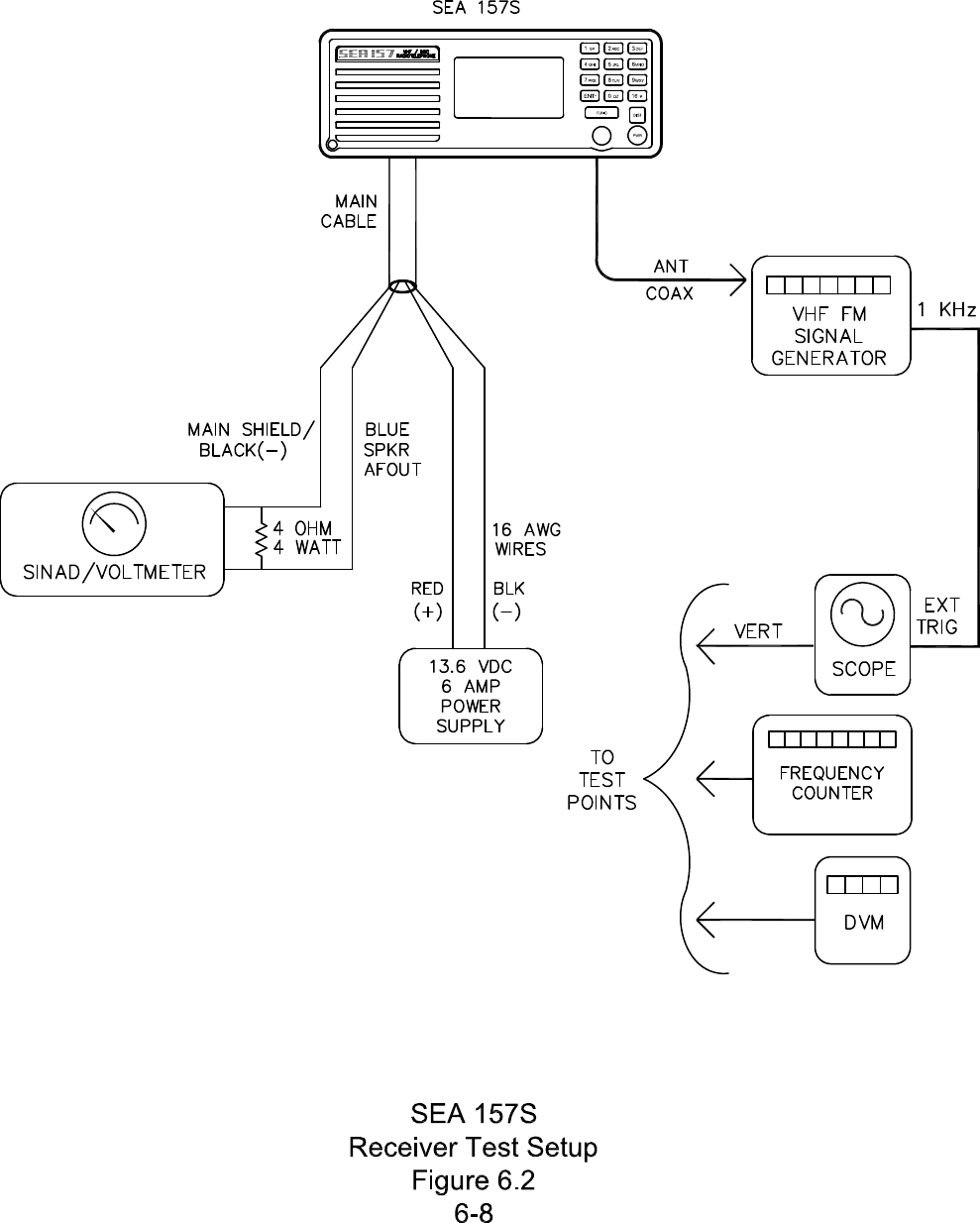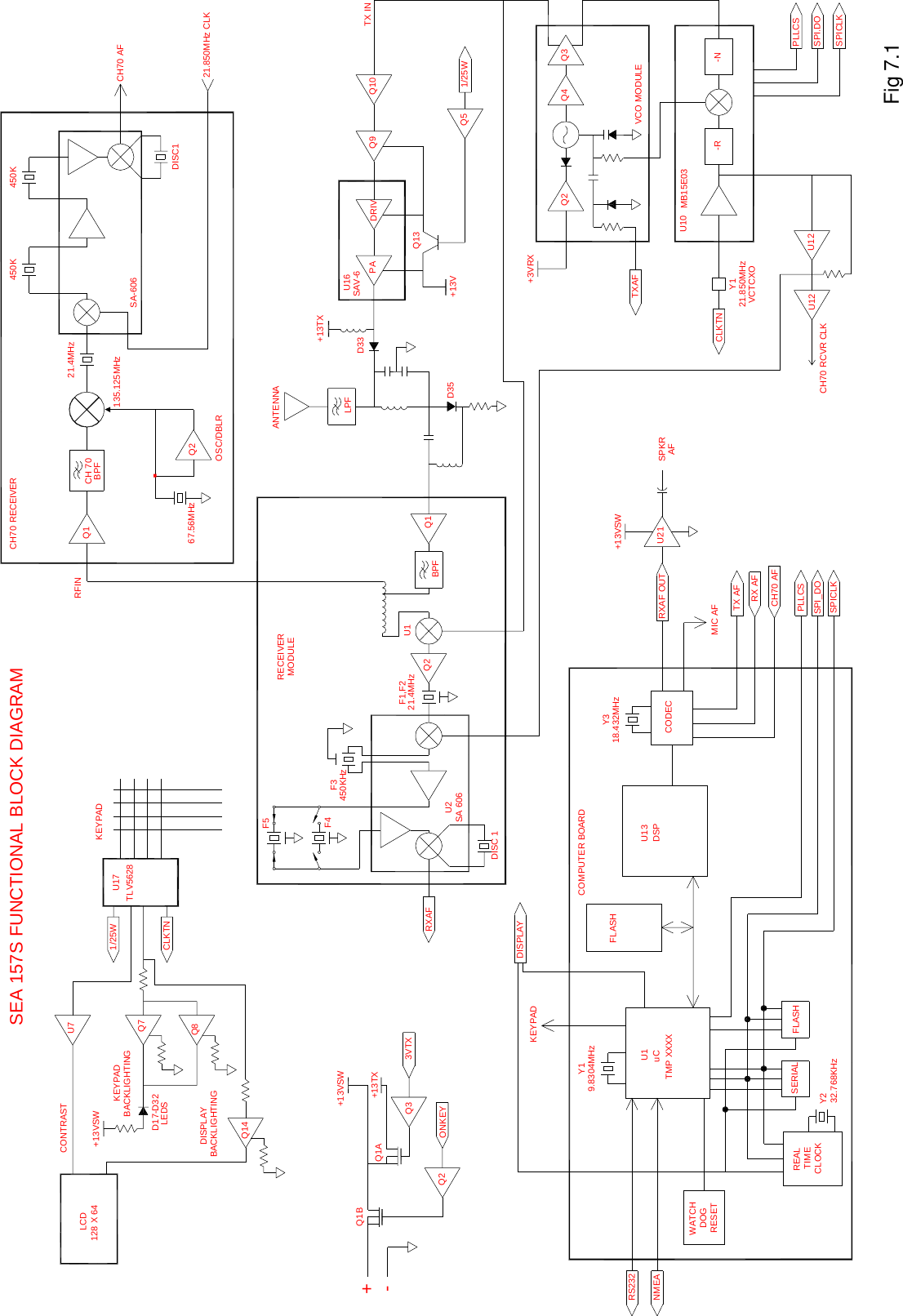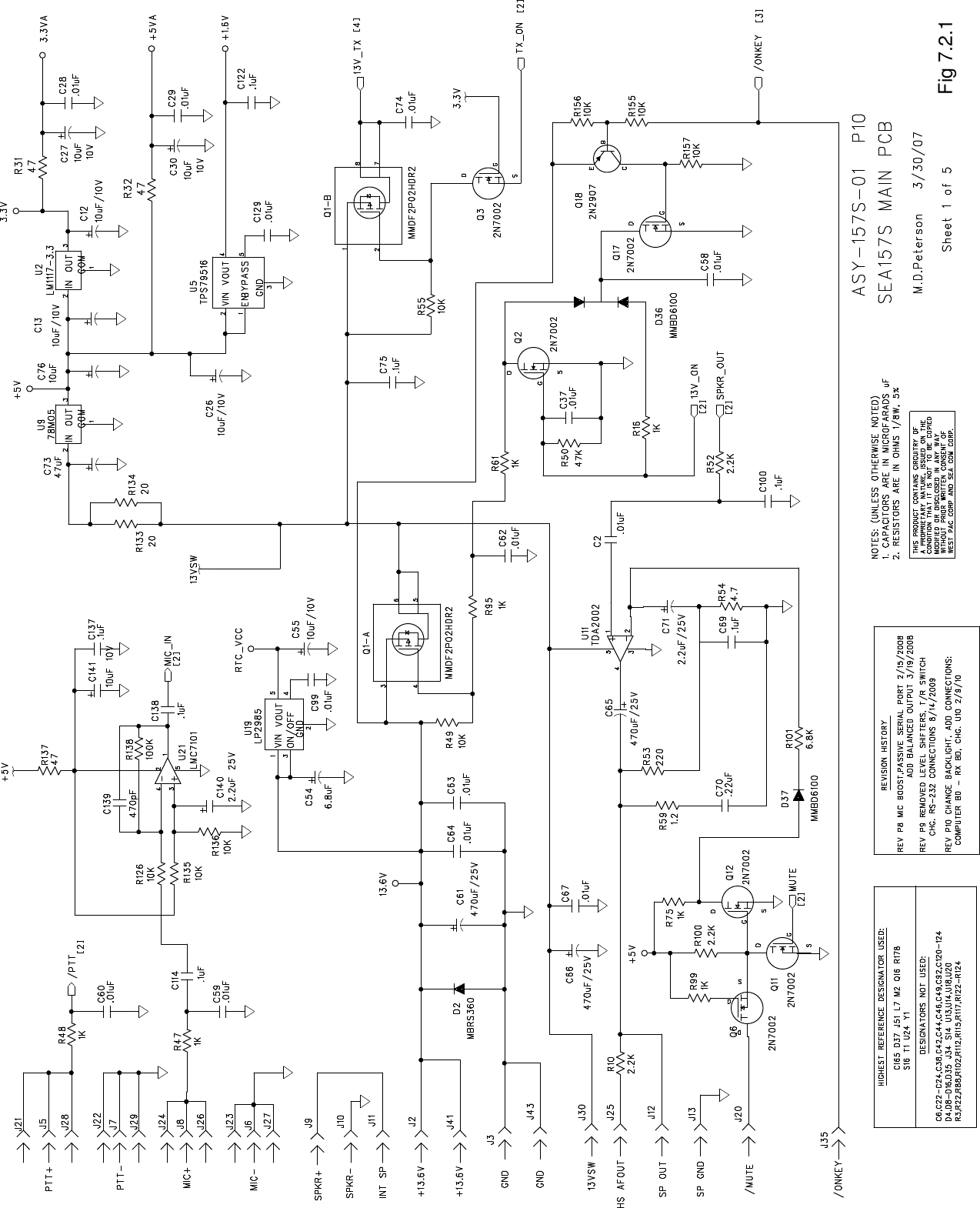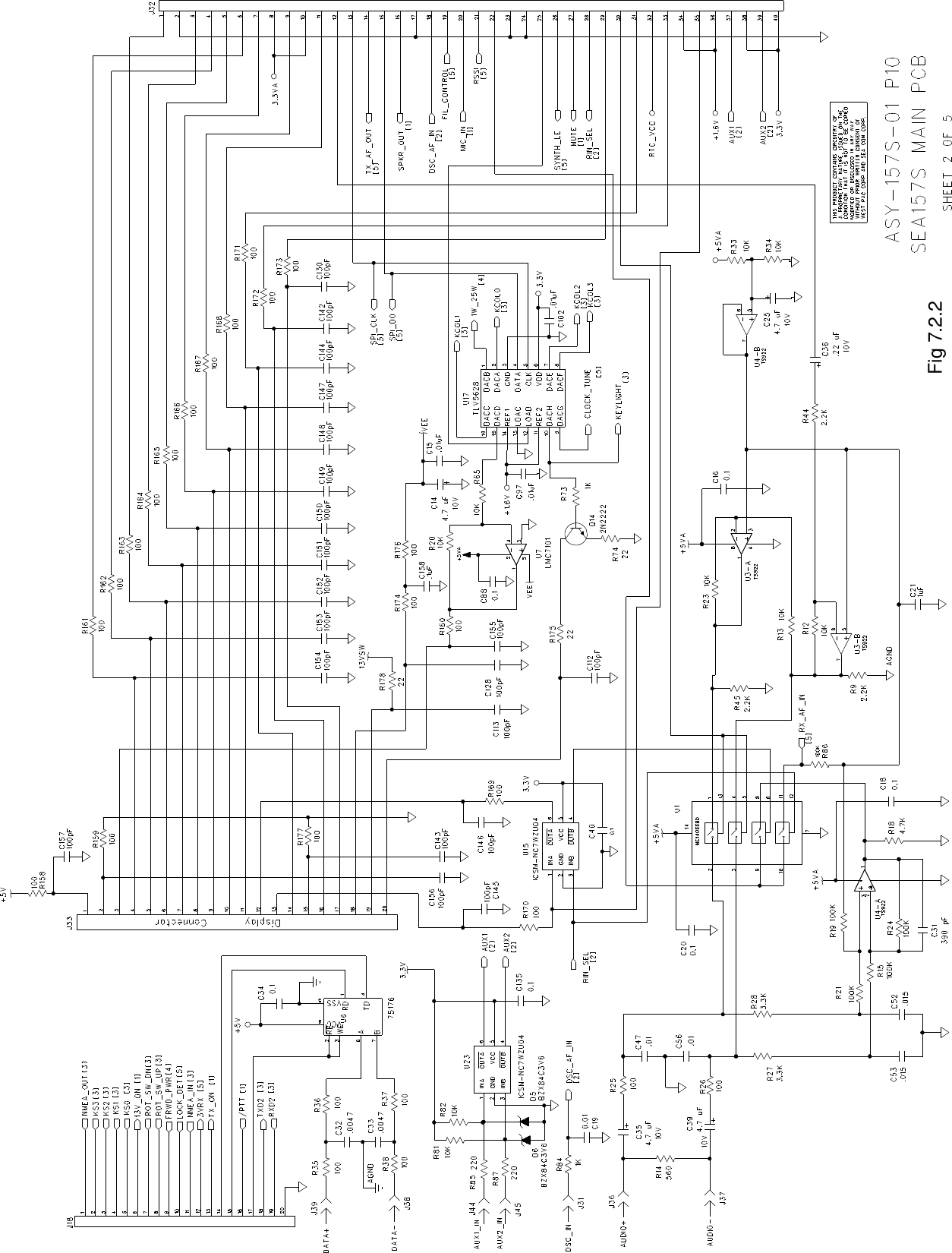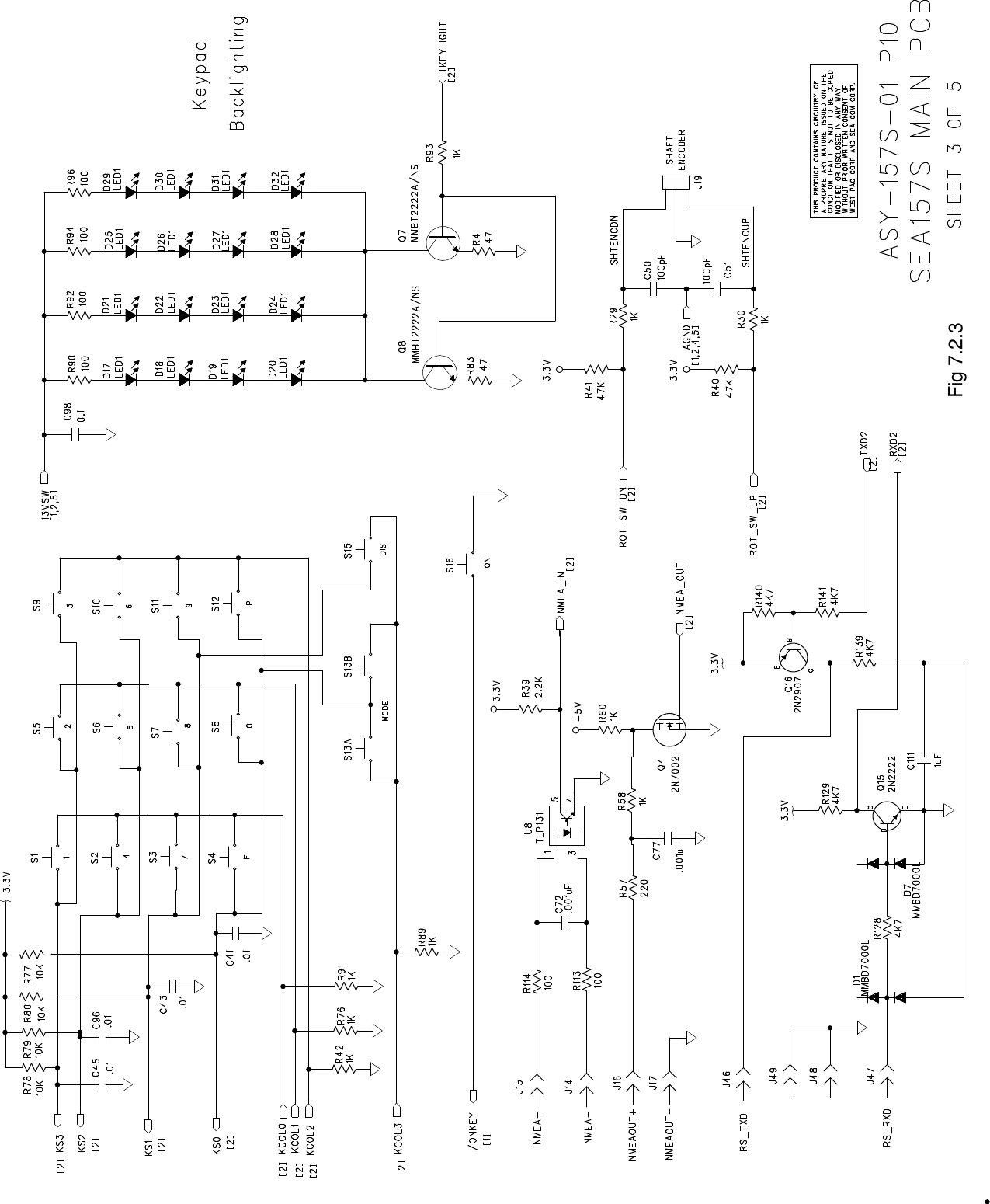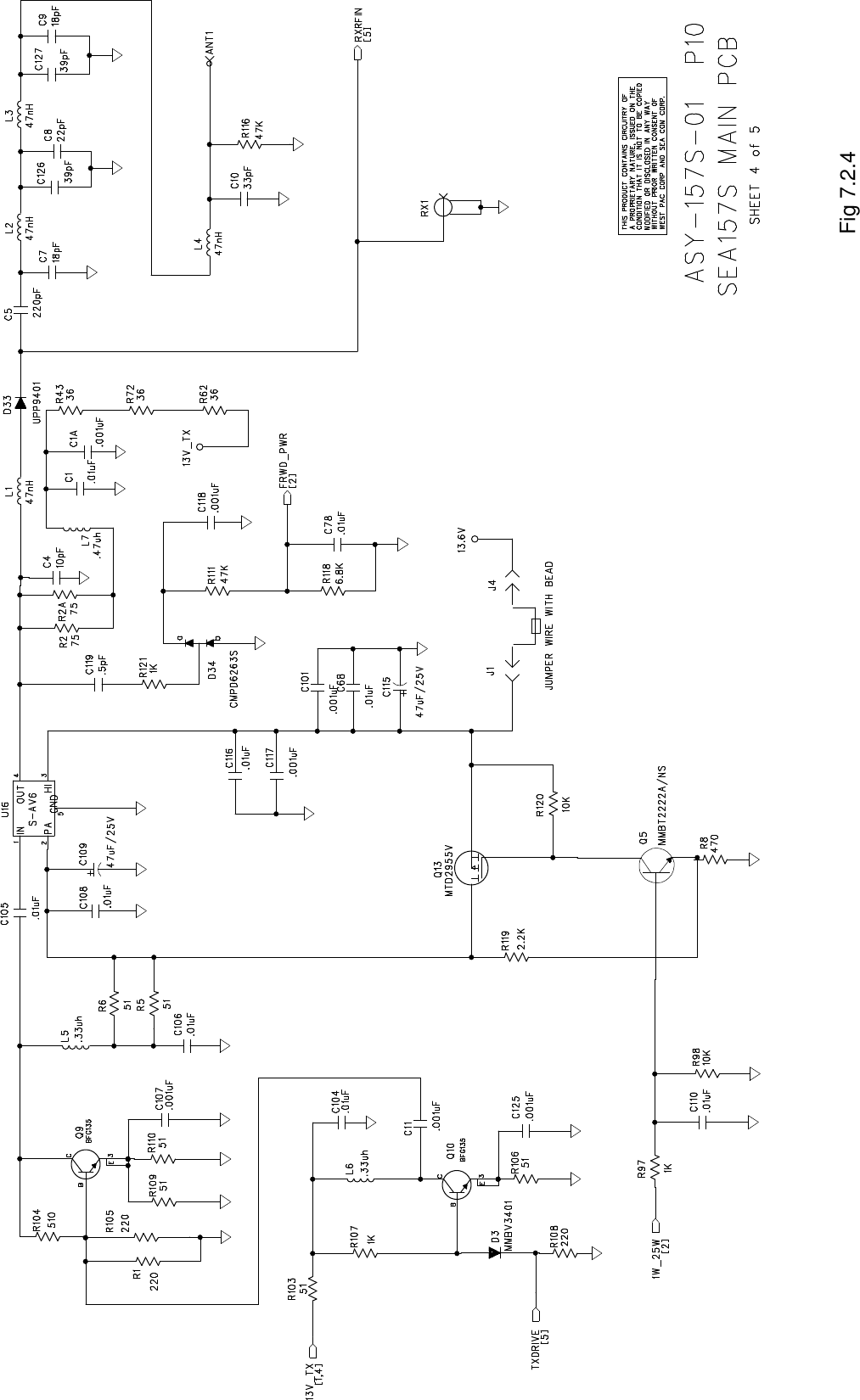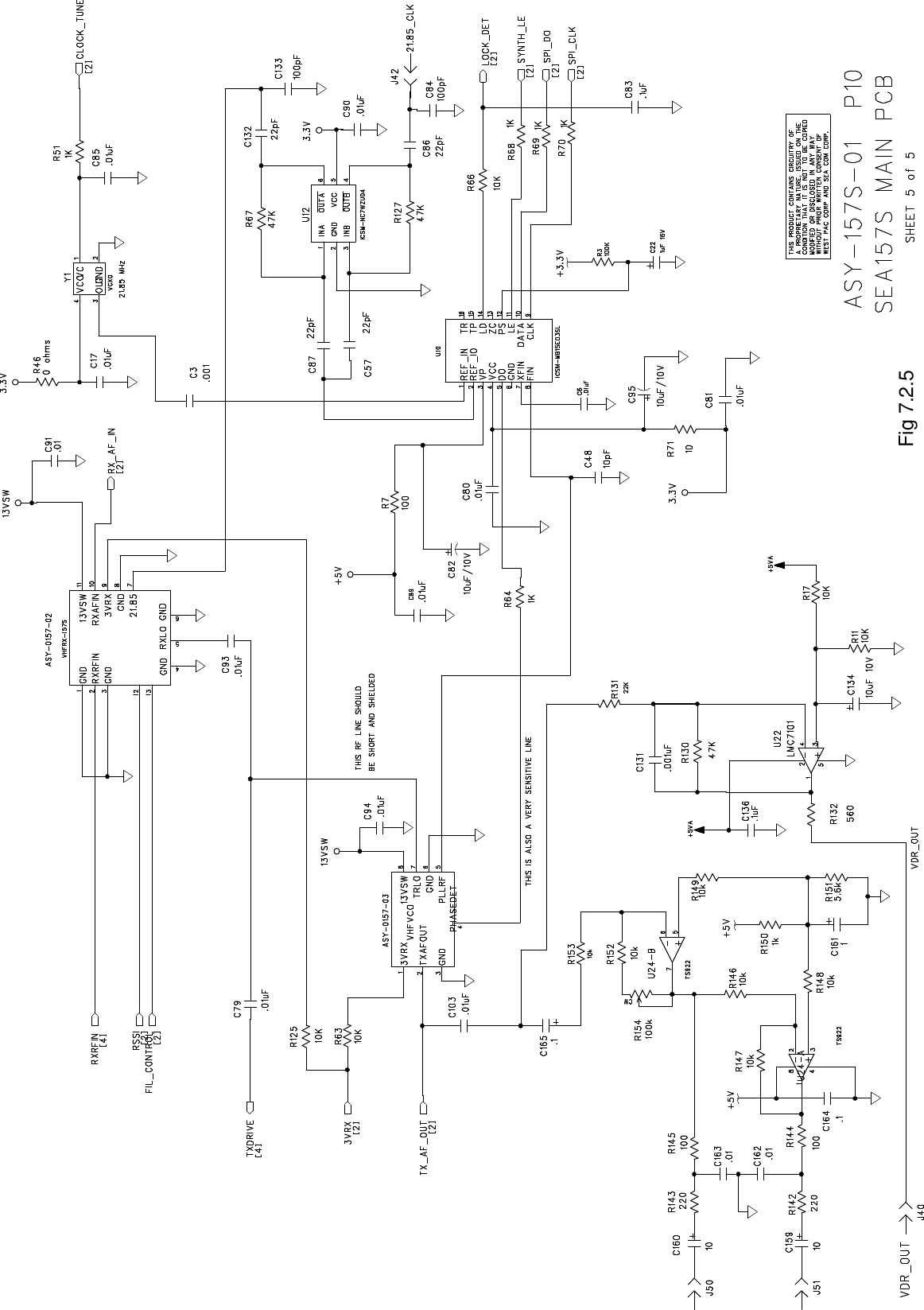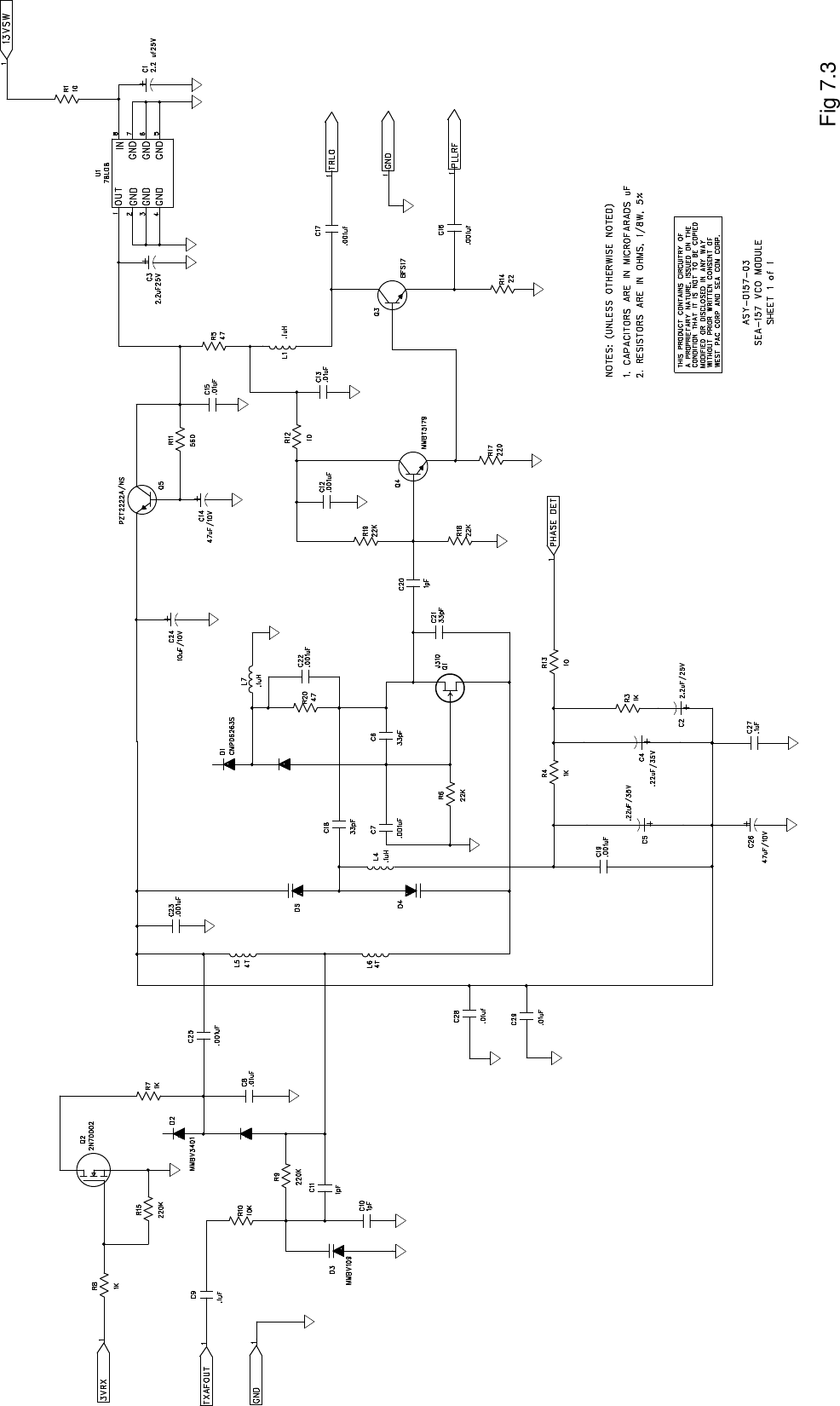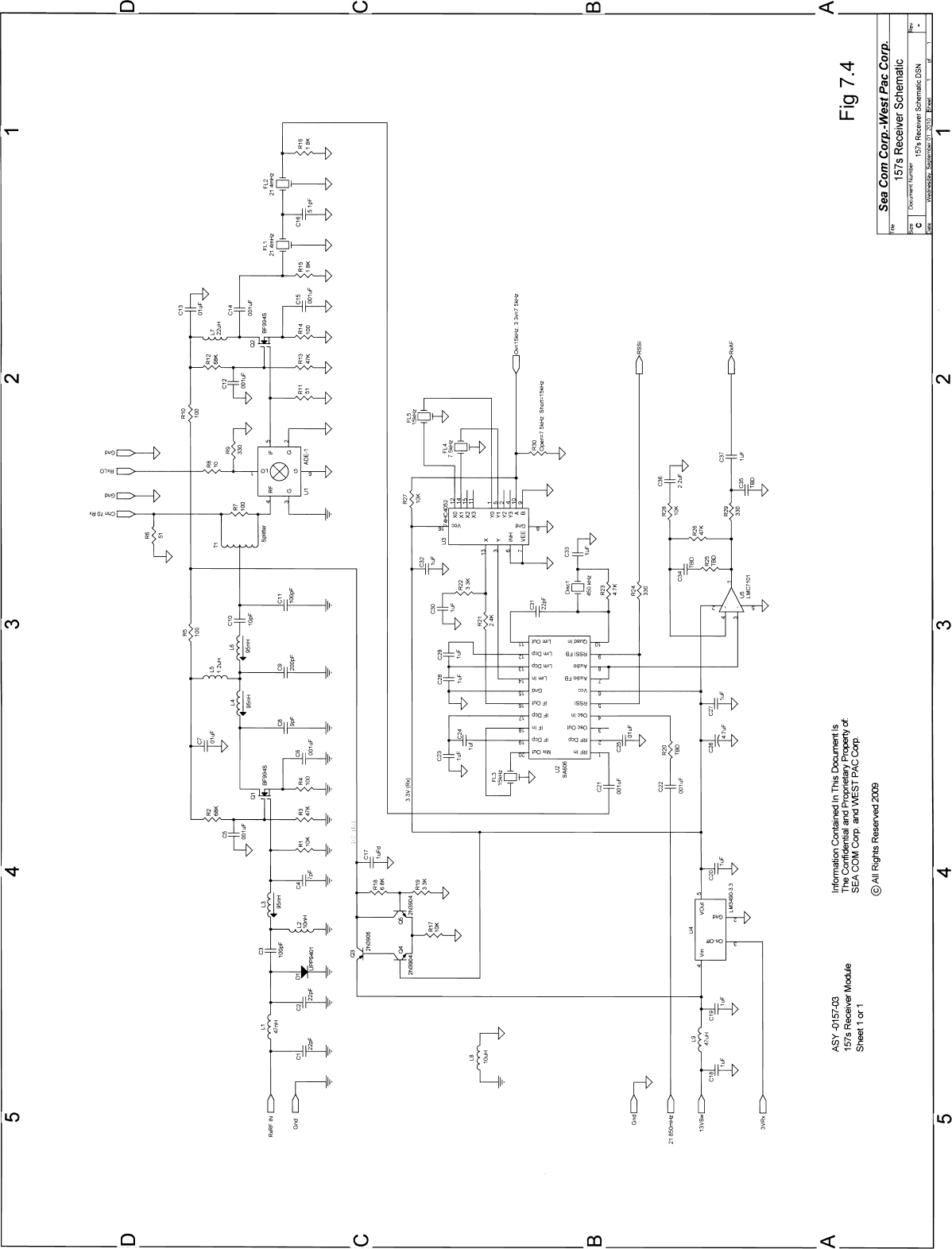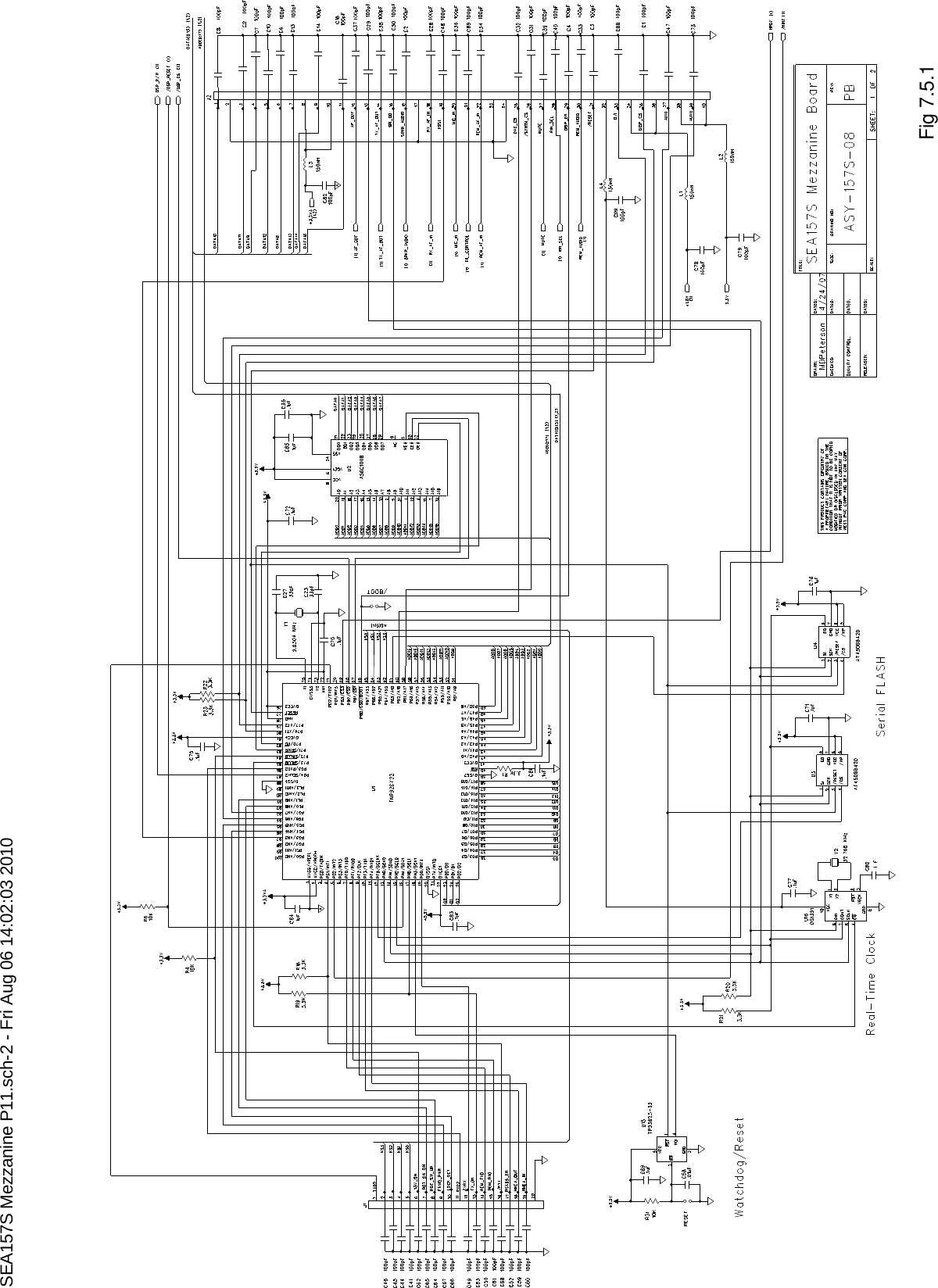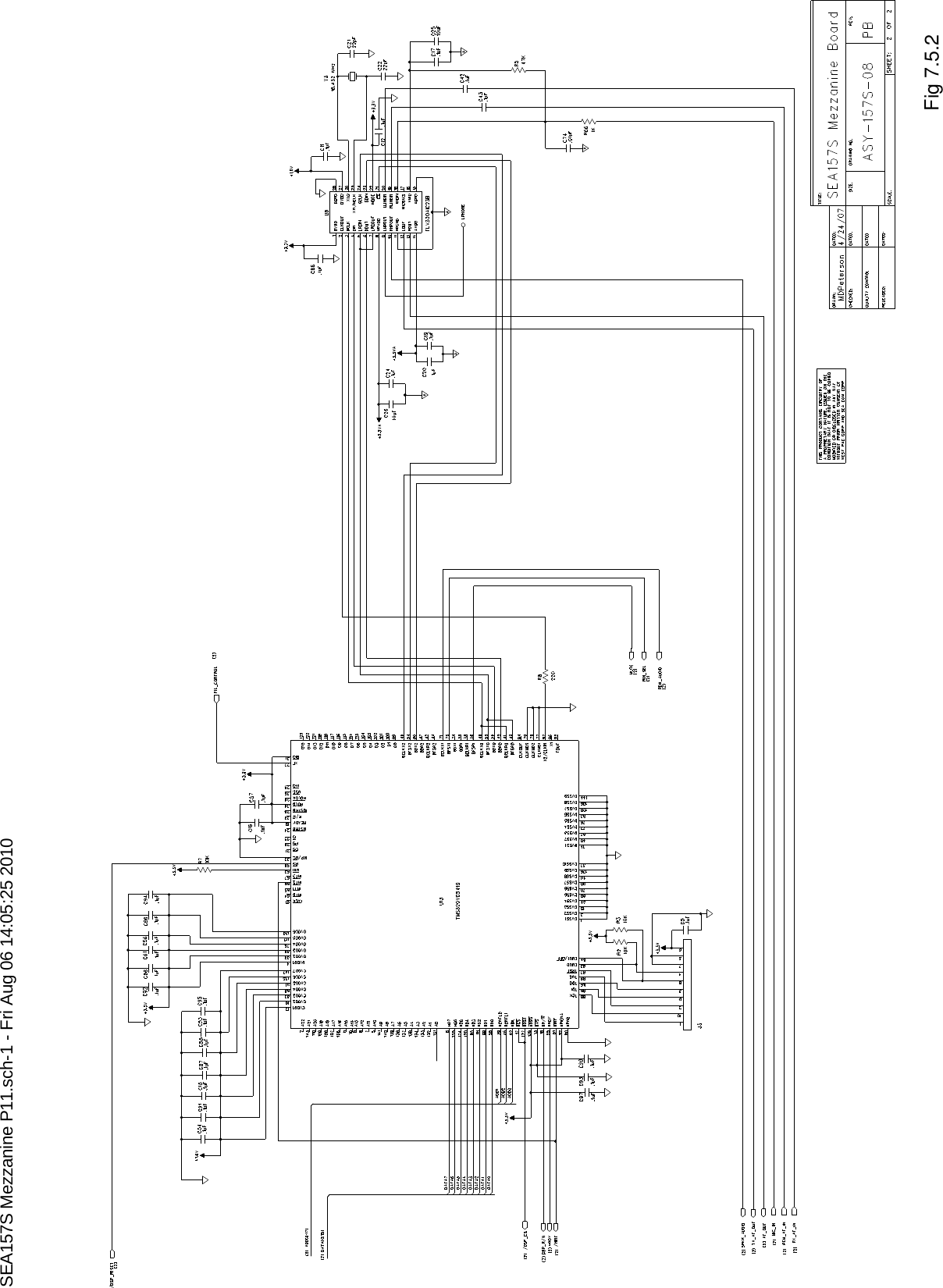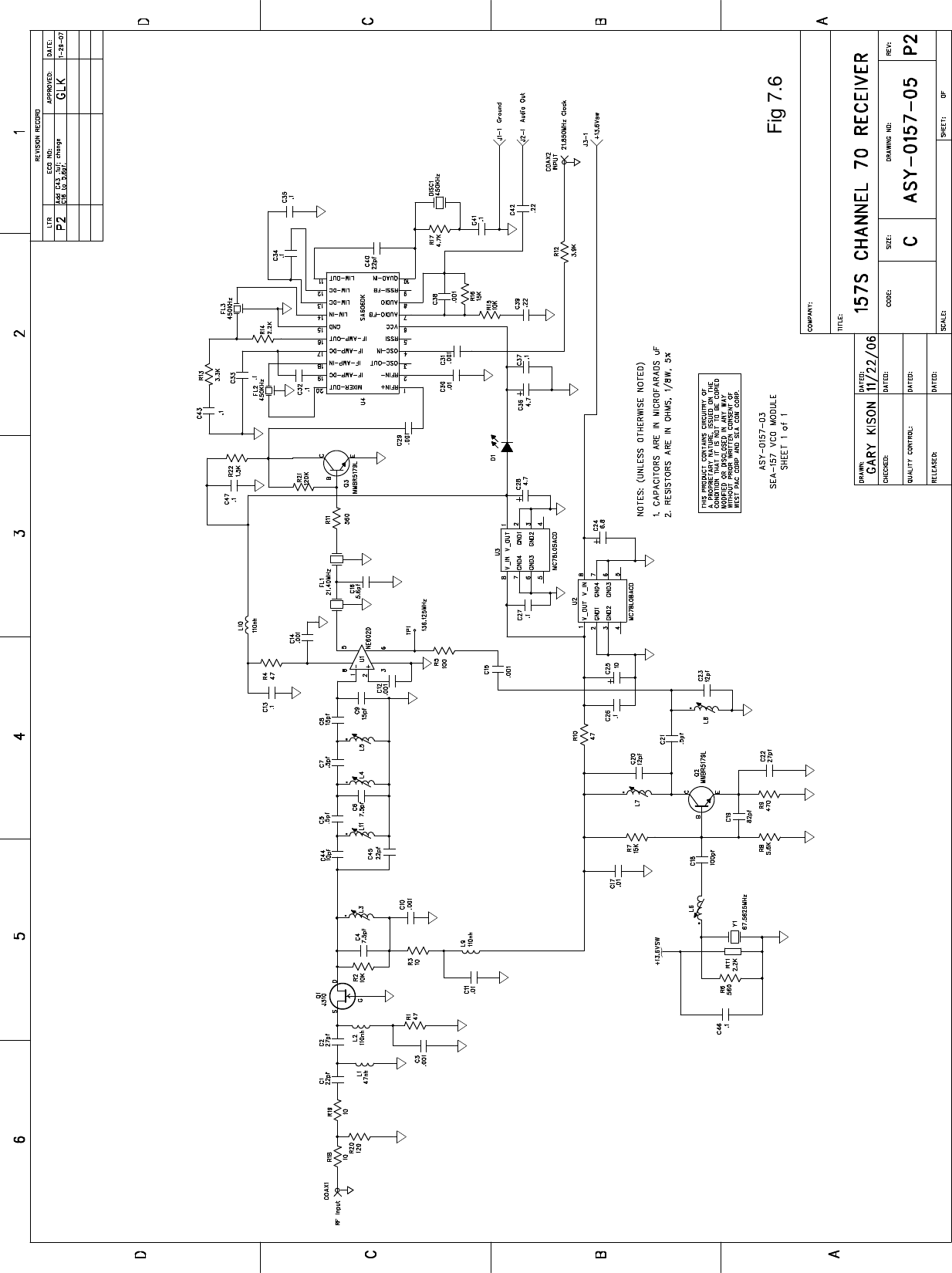SEA COM SEA157S VHF Marine Radiotelephone/Class A DSC GMDSS User Manual April 5 2000 FIRST DRAFT
SEA COM CORPORATION VHF Marine Radiotelephone/Class A DSC GMDSS April 5 2000 FIRST DRAFT
SEA COM >
Contents
- 1. Maintenance/Service manual
- 2. Users Manual
- 3. RF exposure safety warning for operators manual
Maintenance/Service manual
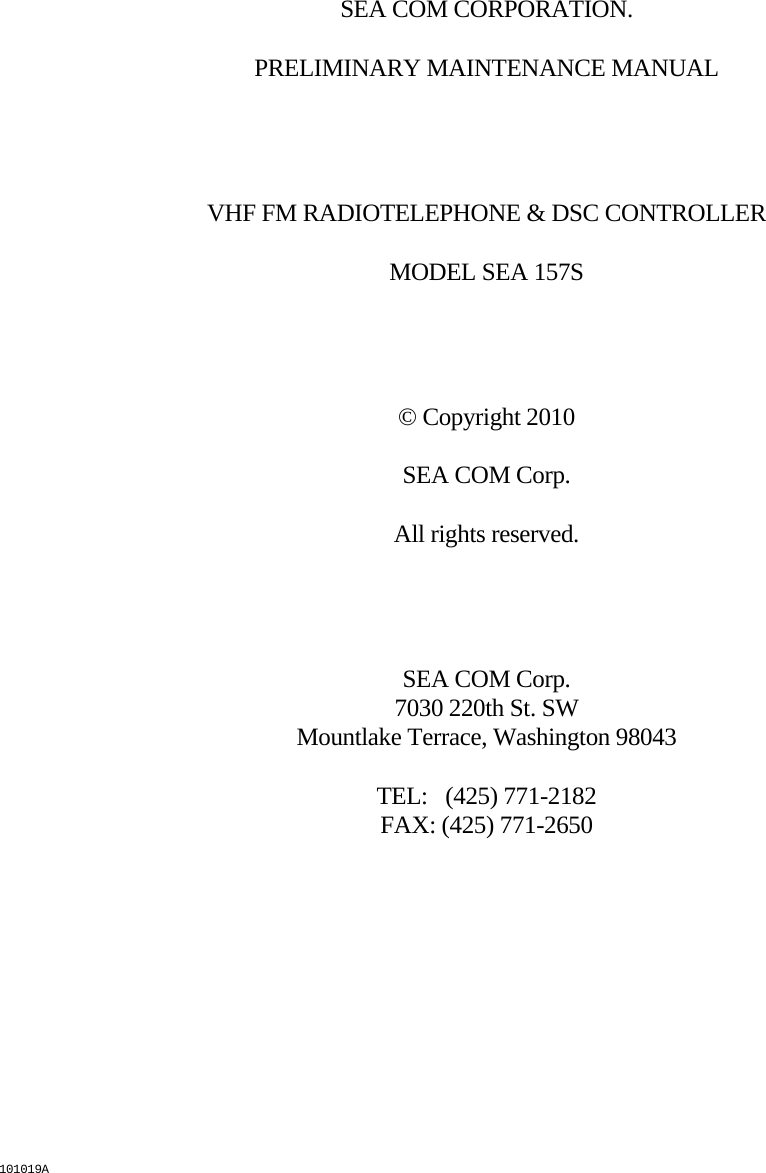
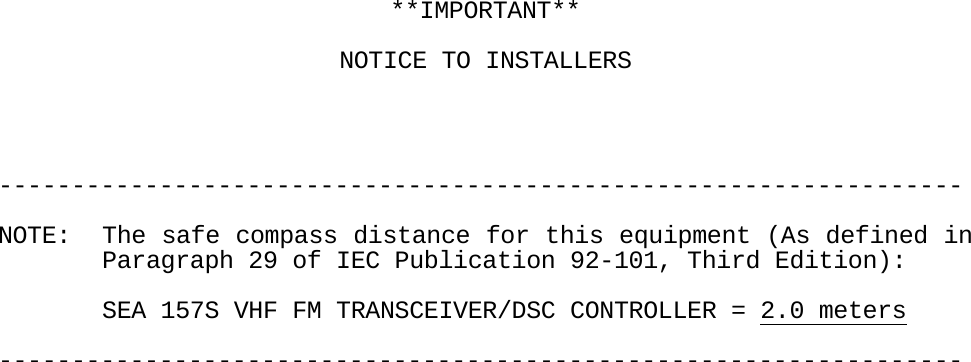

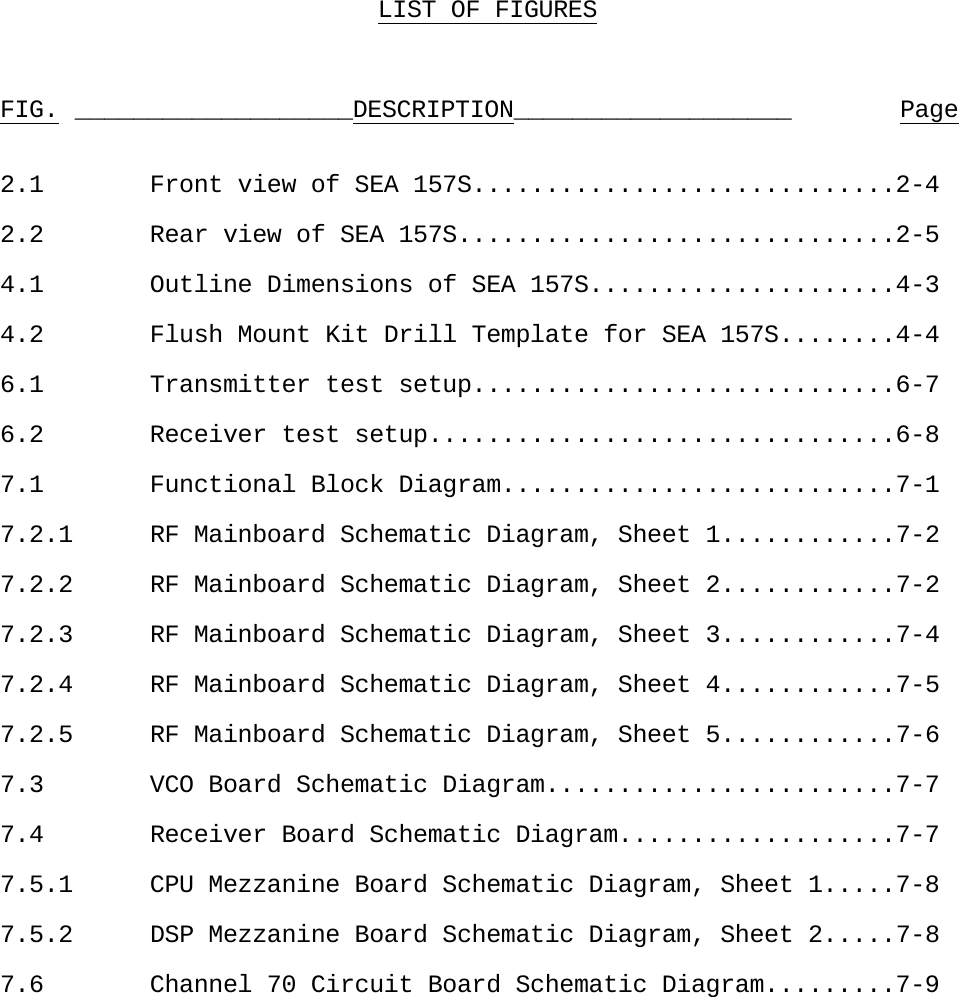
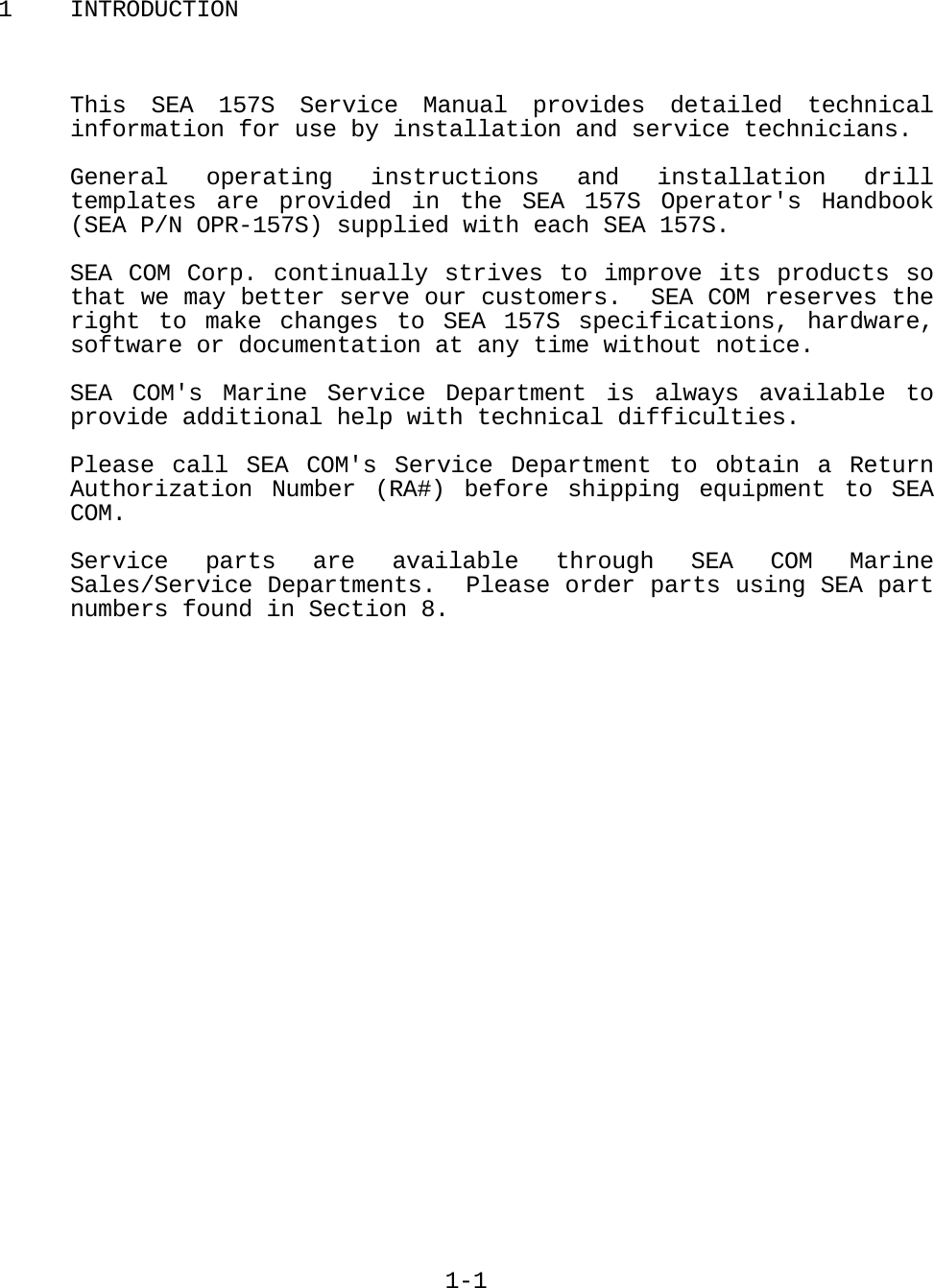
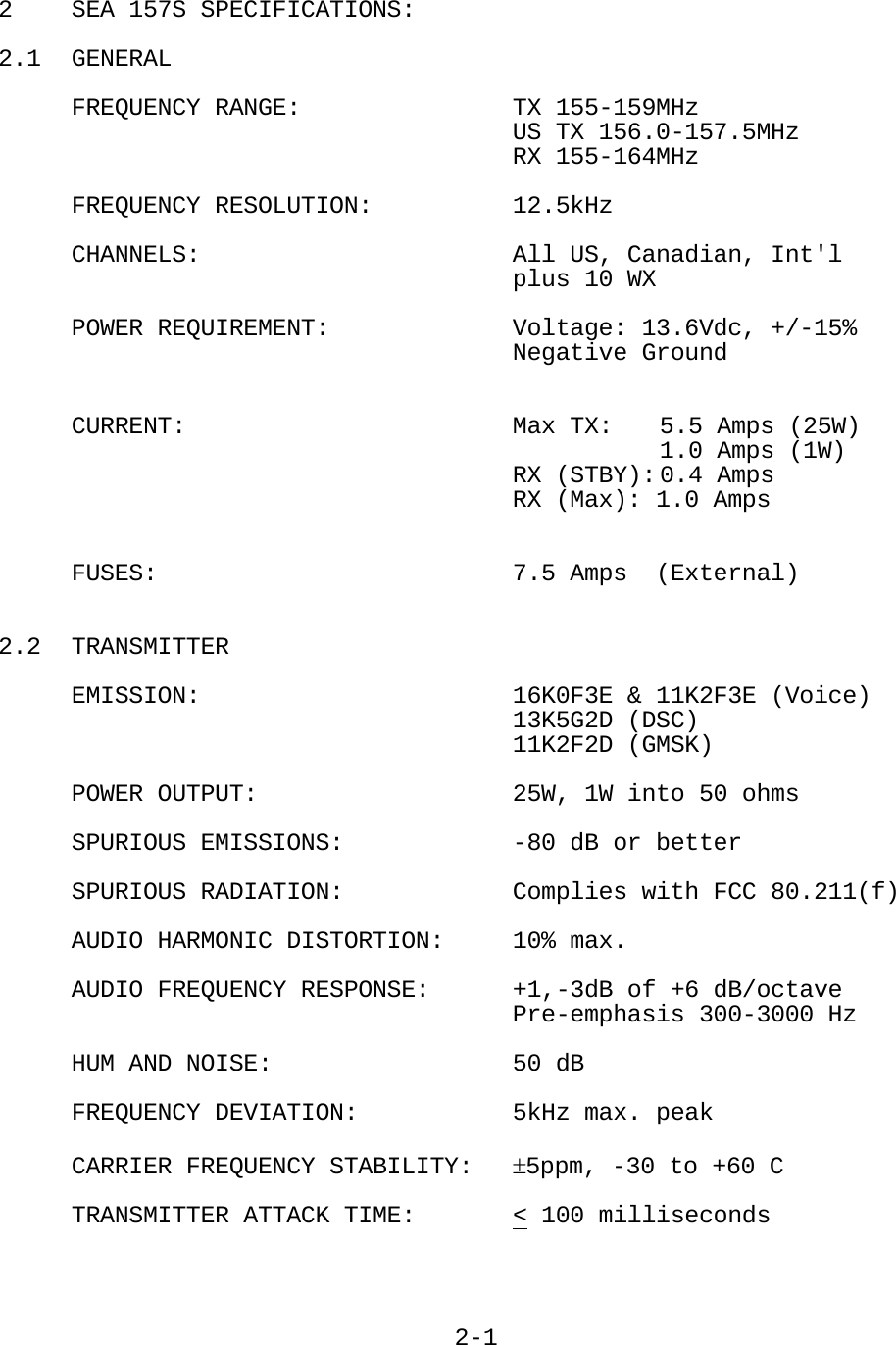
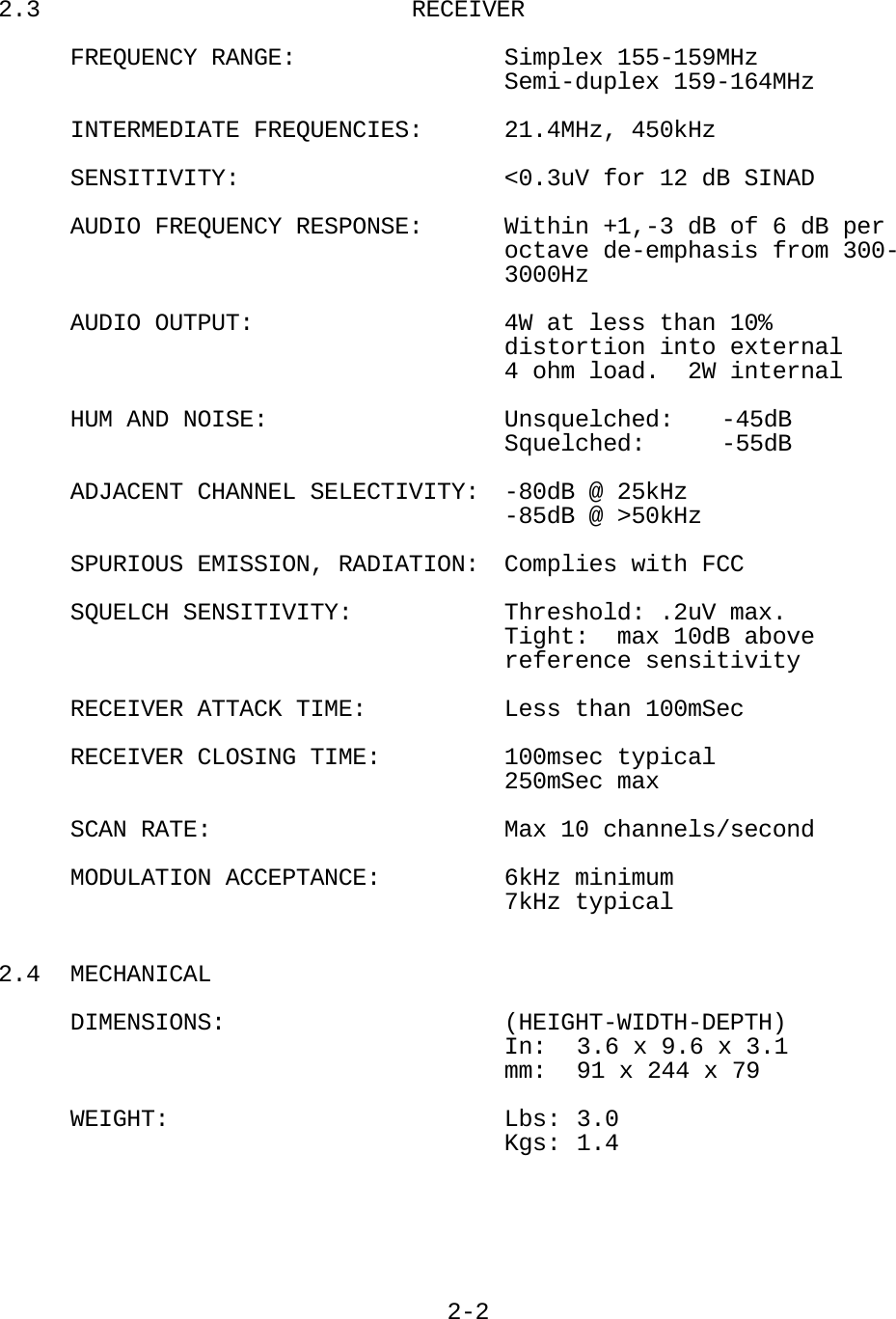
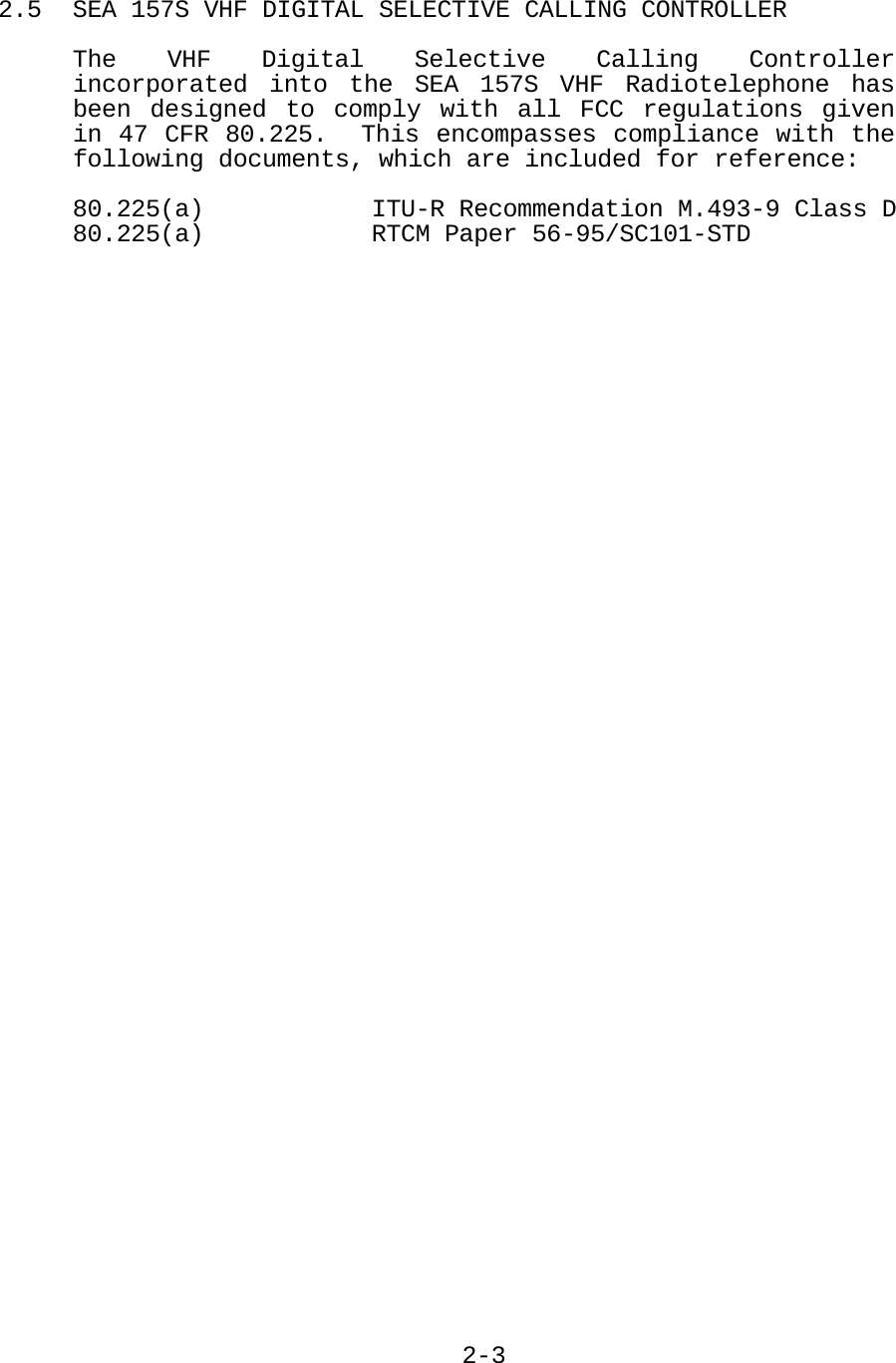
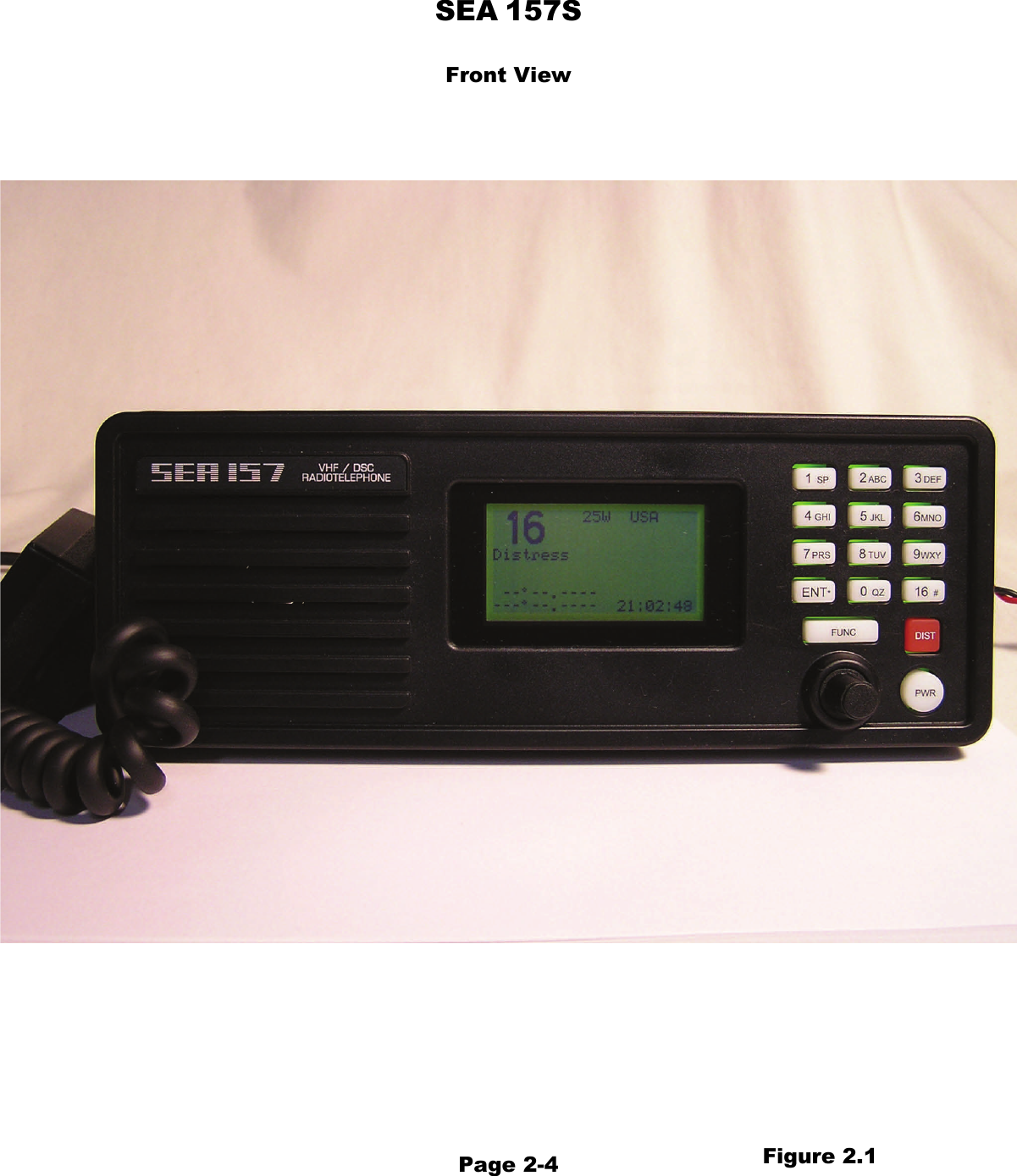
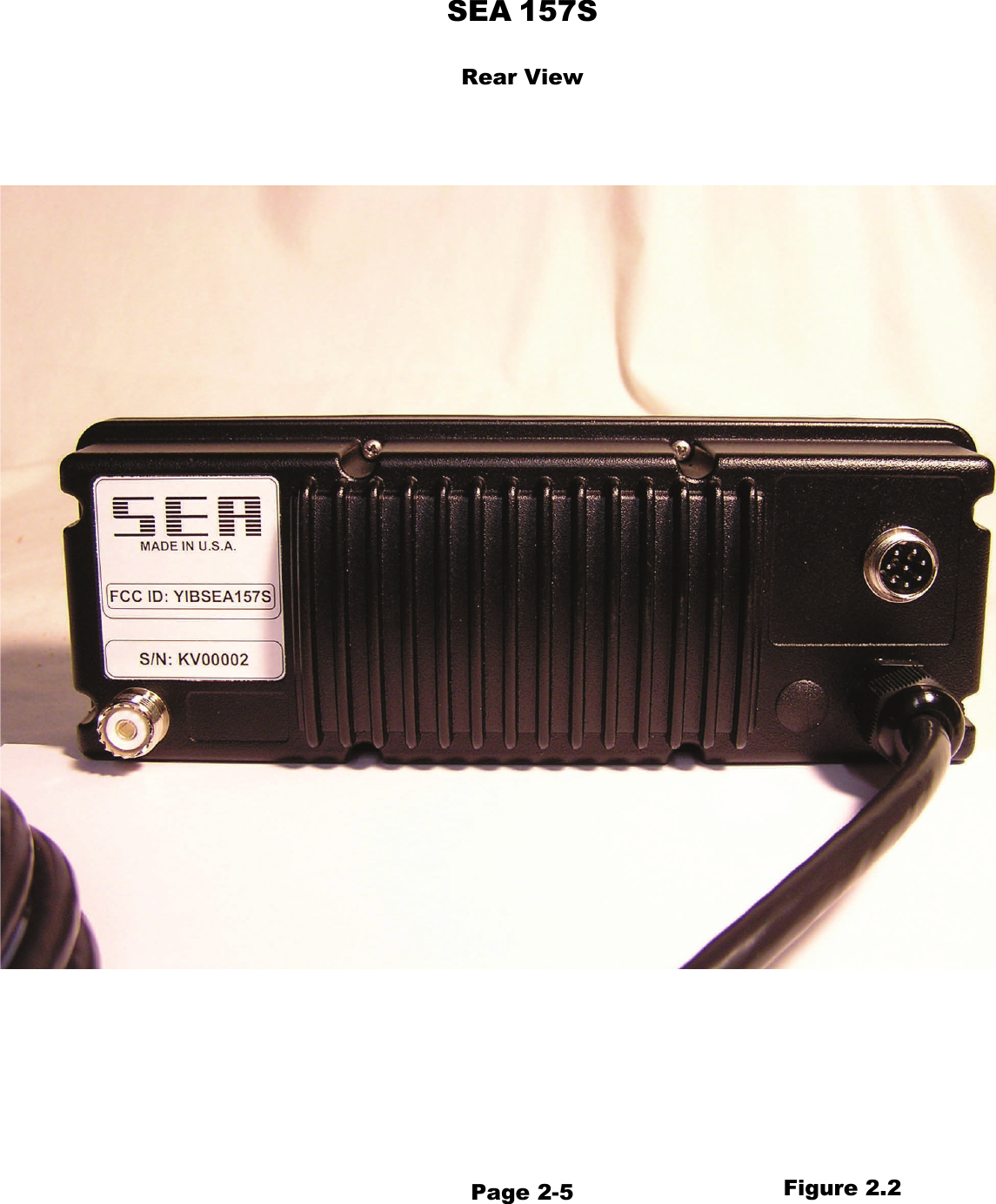
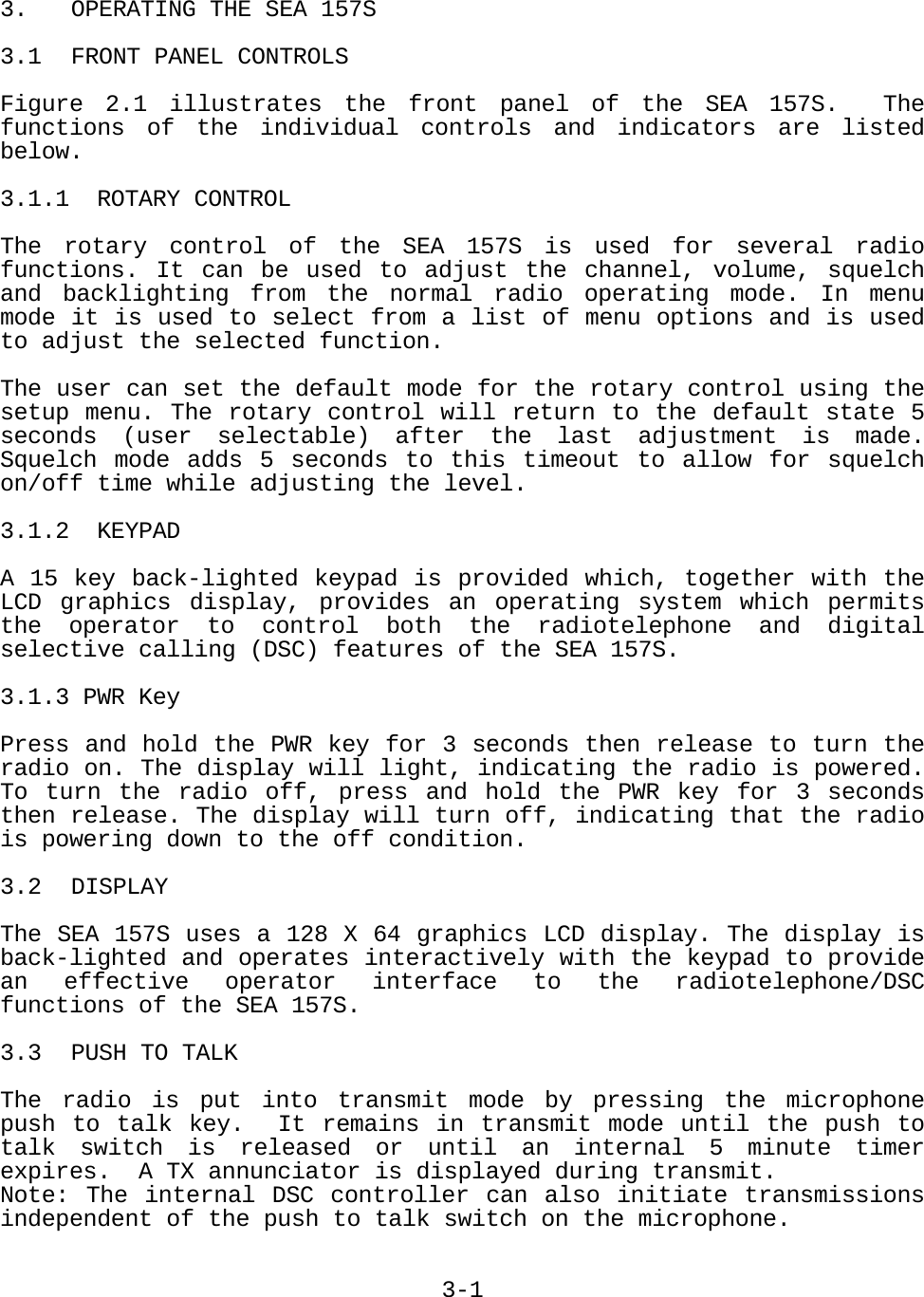
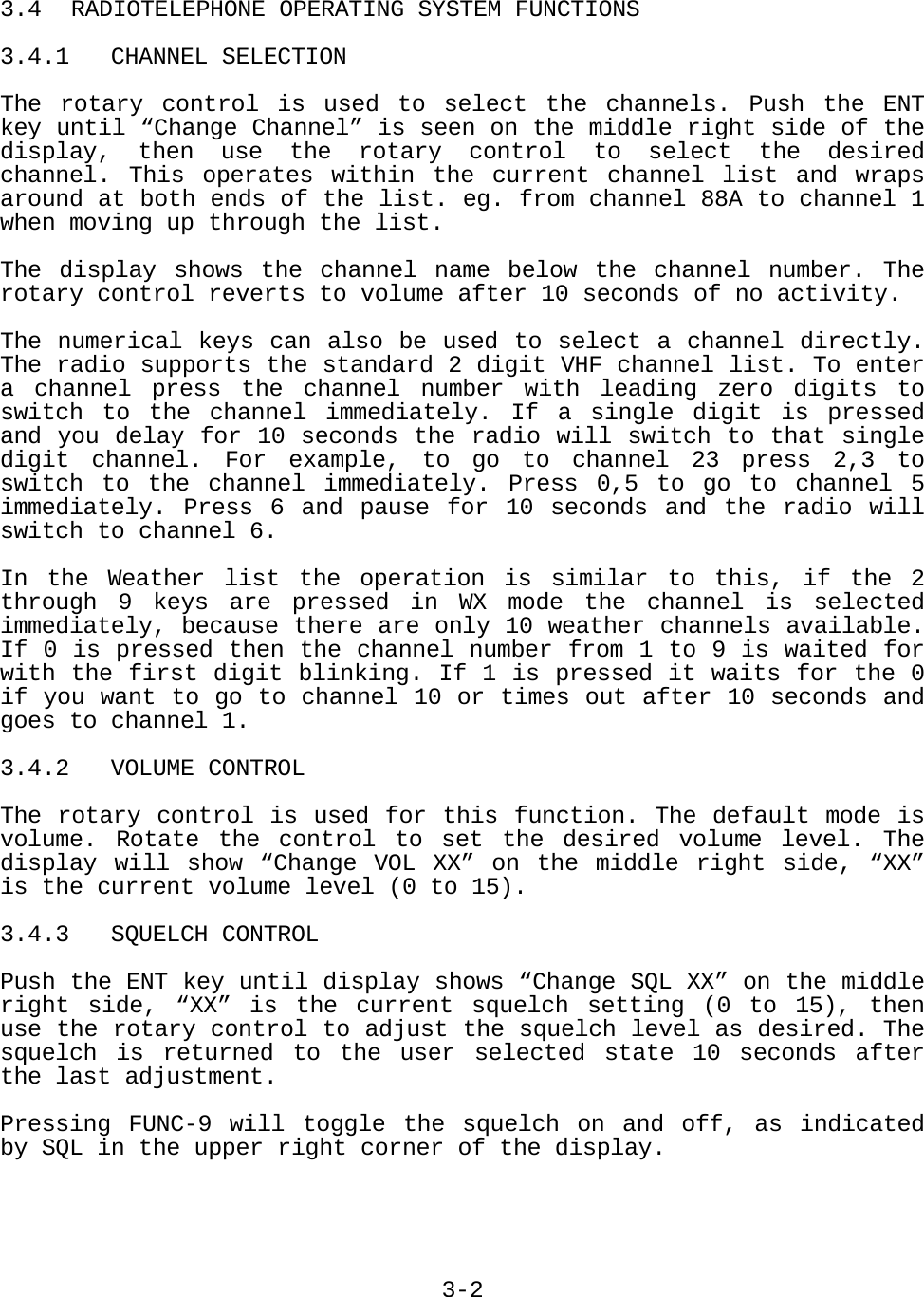
![3.4.4 ADJUSTING THE BACKLIGHTING LEVEL Push the FUNC key until display shows “Change DIM XX” on middle right side of display. “XX” is the current brightness setting. 0 is off and 15 is maximum. Using the rotary control, adjust the brightness level as desired. The rotary control is returned to the user selected state 10 seconds after the last adjustment. 3.4.5 CHANNEL LIST SELECTION Pressing FUNC-6 will toggle the radio between the USA, INT and WX channel lists. The radio will go to the last used channel in the selected list. 3.4.6 EMERGENCY CHANNEL SELECTION Pushing the 16# key at any time, in any state of operation, will cause the radio to go to CH16 in the current frequency list, or in the case of pressing 16# key while in the Weather list, it will go to CH16 in the USA list. 3.4.7 TRANSMITTER POWER CONTROL On channels that allow 25W transmission, pressing FUNC-7 toggles the transmitter power level between 25W and 1W. FUNC-7 is non-functional on channels that only allow 1W. When transmitting on a 1W only channel, the FUNC key may be held down while transmitting to temporarily switch to 25W. 1W will be displayed when in the 1W mode and 25W when in the 25W mode. 3.4.8 DUAL WATCH The SEA 157S has two watch modes available. Dual watch is initiated by pressing FUNC-1 briefly while on the primary channel you want to monitor. DW will be indicated on the display and channel 16 will be checked every 2 seconds while there is no activity on either channel. If there is activity on the primary channel or on channel 16, the radio will remain on that channel until there is no activity for a pre-programmed number of seconds [hangtime]. This behavior can be changed so that channel 16 always has priority by using the Dual Watch setup menu option. The display will indicate which channel is operational. Pressing PTT will exit dual watch and switch to the current channel. Dual Watch will not be initiated if selected while on channel 16. The Triple Watch function is started by pressing FUNC-1 for longer than 1 second on the primary channel that you want to monitor. TW will be indicated on the display and will check channel 16 and the Priority channel every 2 seconds. By default channel 16 has priority, but this behavior can be changed using the Triple Watch setup menu option. 3-3](https://usermanual.wiki/SEA-COM/SEA157S.Maintenance-Service-manual/User-Guide-1366168-Page-13.png)
